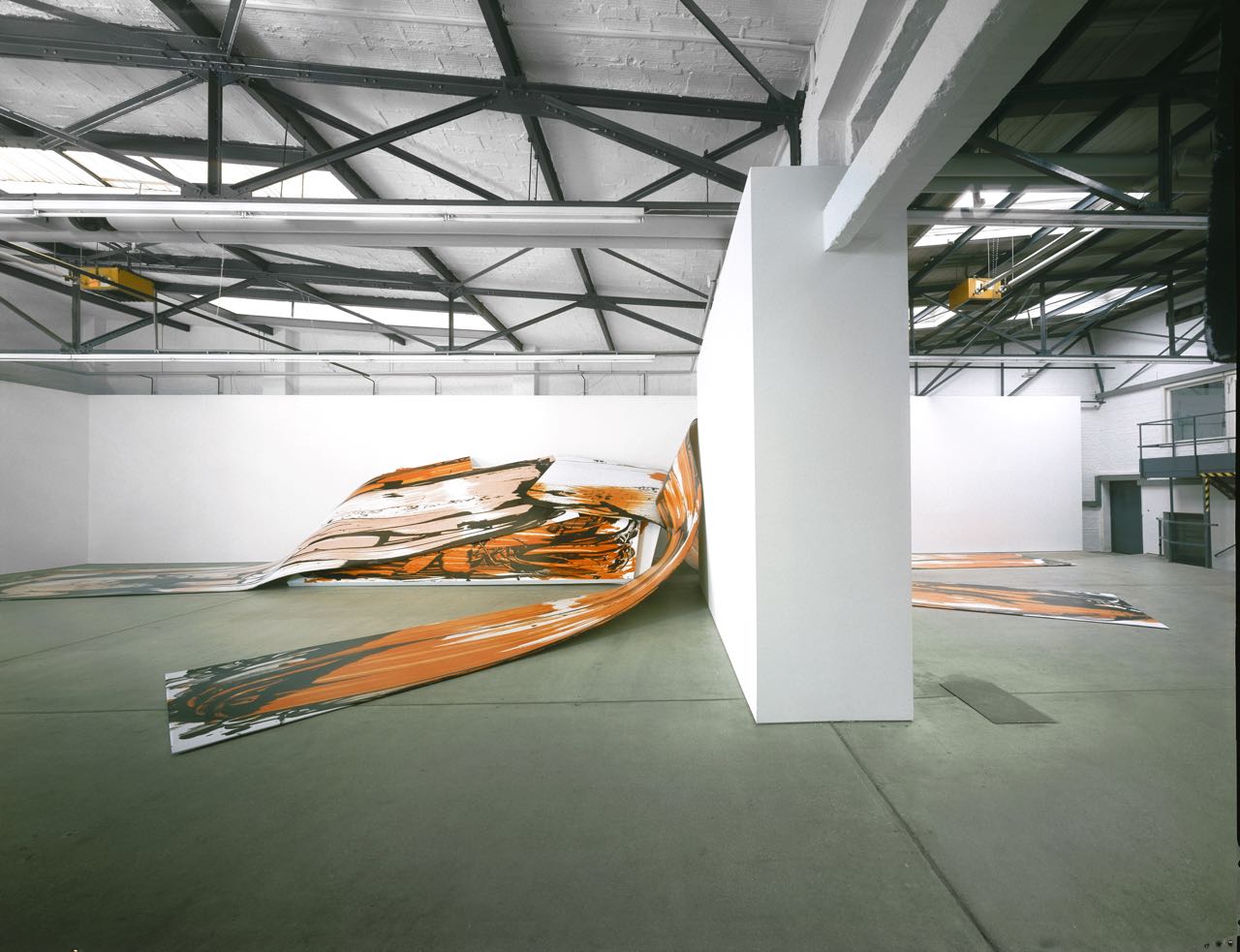Here You Are, 9 March – 20 April 2024, Michael Lett Gallery, Auckland / Tamaki Makaurau, New Zealand
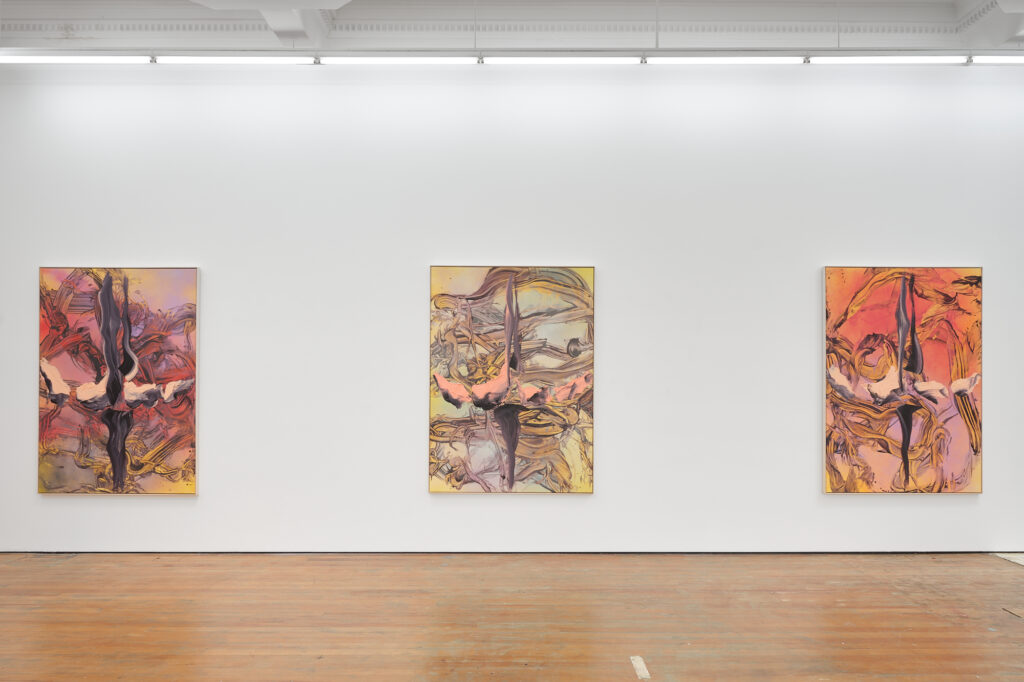
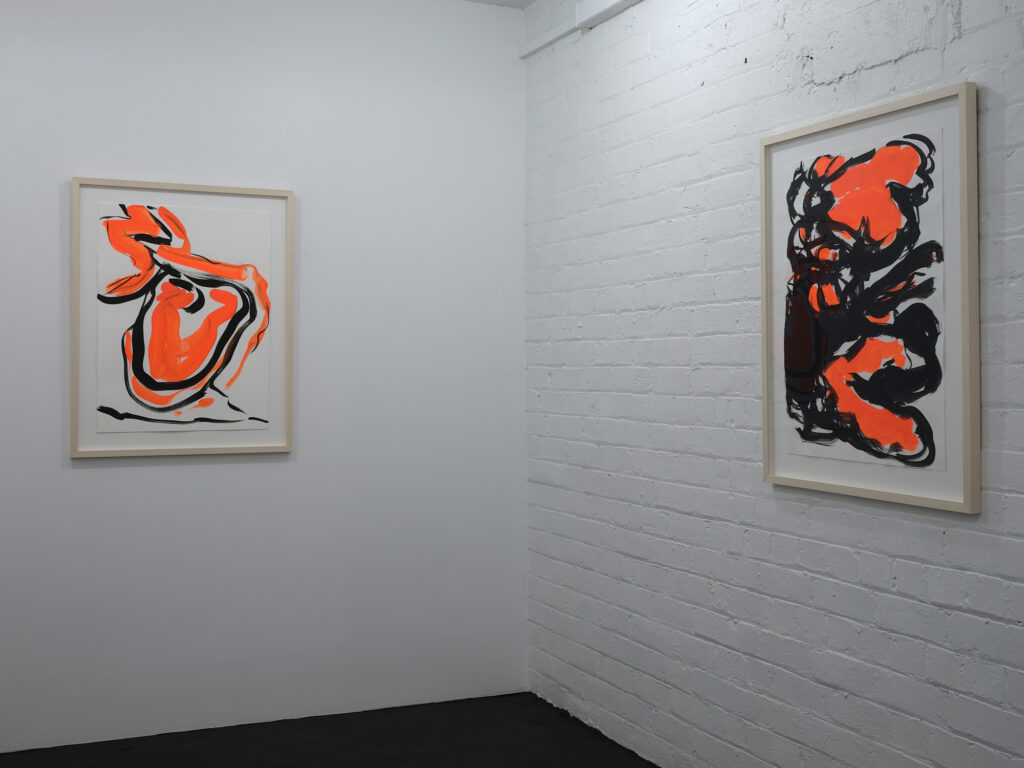
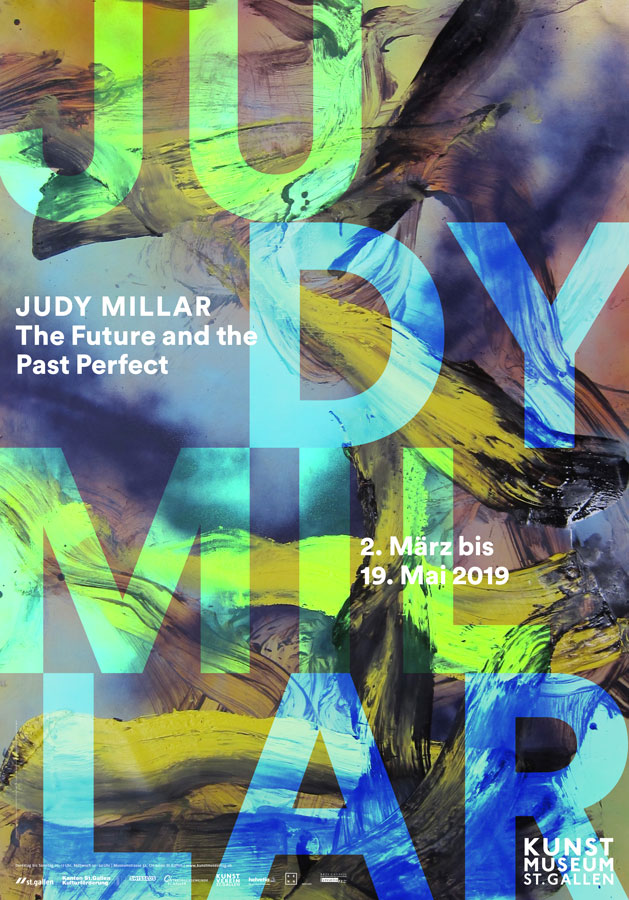
The Future and the Past Perfect – a survey of Millar’s work from 1981 to 2018. Kunstmuseum St Gallen, Switzerland. 2nd March – 19th May 2019.
Here You Are, 9 March – 20 April 2024, Michael Lett Gallery, Auckland / Tamaki Makaurau, New Zealand
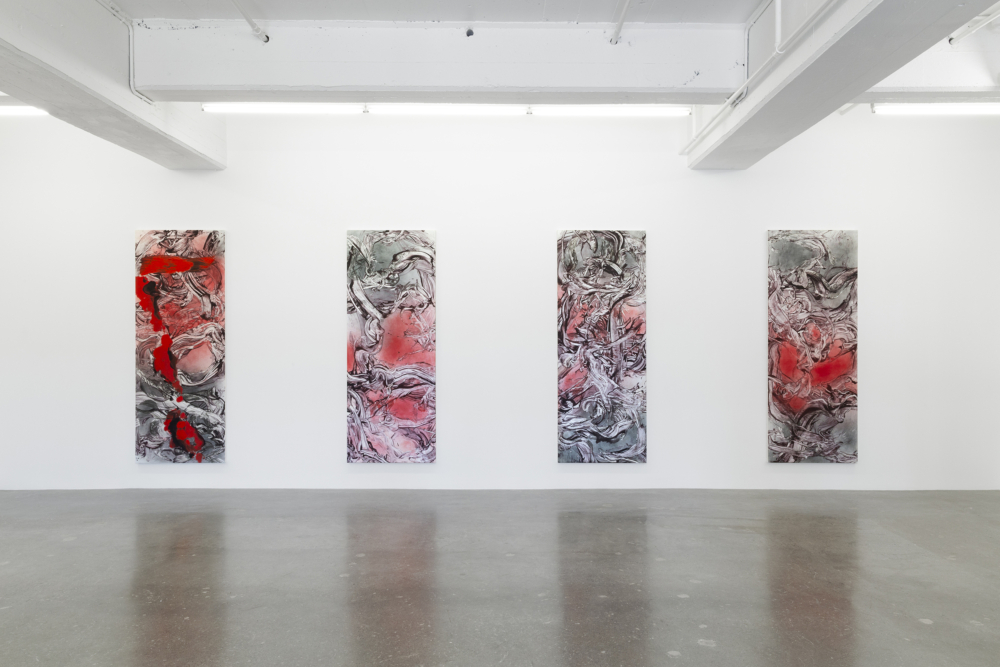
Cry Sea, Cry Sky Robert Heald Gallery, Wellington, Aotearoa/New Zealand
25 January – 24 February 2024
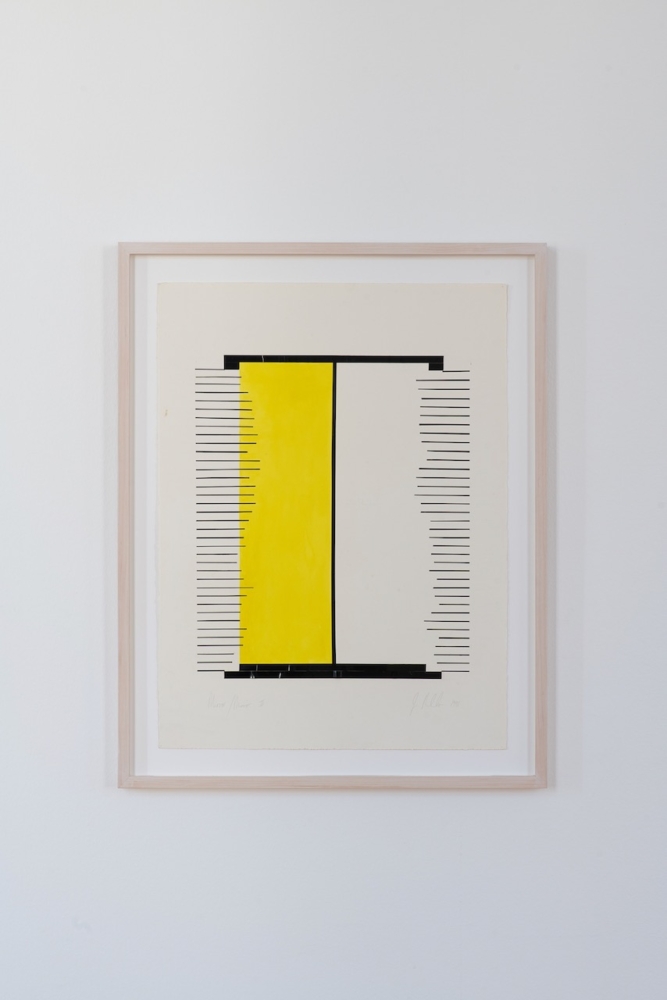
Spotlight, Kunstmuseum St Gallen, Switzerland: 25 November 2023- 24 March 2024
Spotlight focuses on the individual artists for whom Kunstmuseum St Gallen holds significant bodies of work: John M. Armleder, Candice Breitz, Silvie Defraoui, Georg Gatsas, Sharon Hayes, Sara Masüger, Judy Millar, and Carl Ostendarp.
Malerei – Galerie Mark Mueller, Zurich www.markmueller.ch
11 November – 23 December 2023
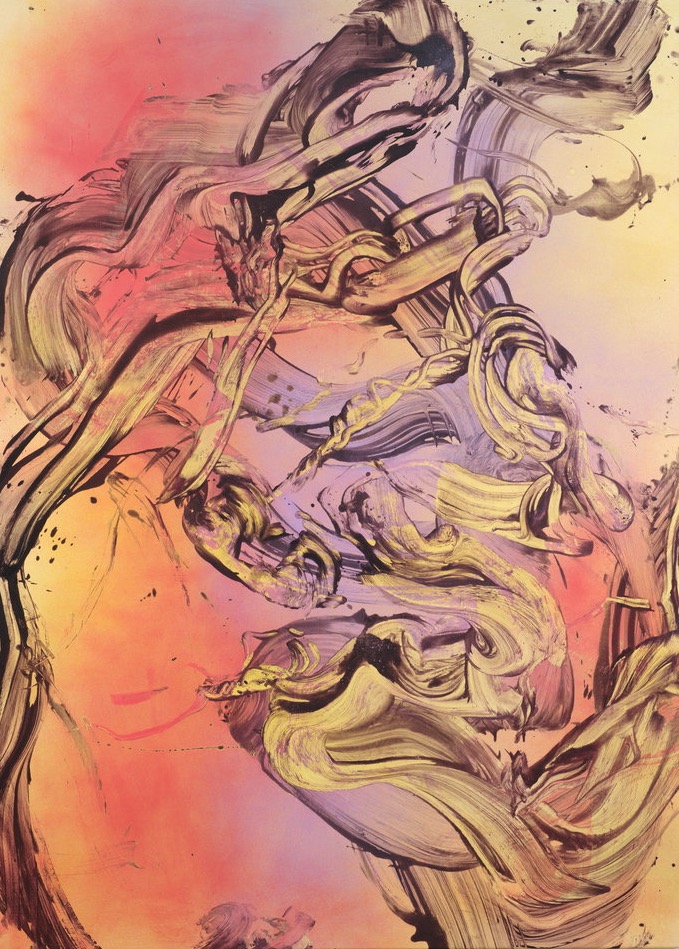
Questions I Have Asked Myself September 3 – November 15 2020
Galerie Mark Mueller, Zurich, Switzerland
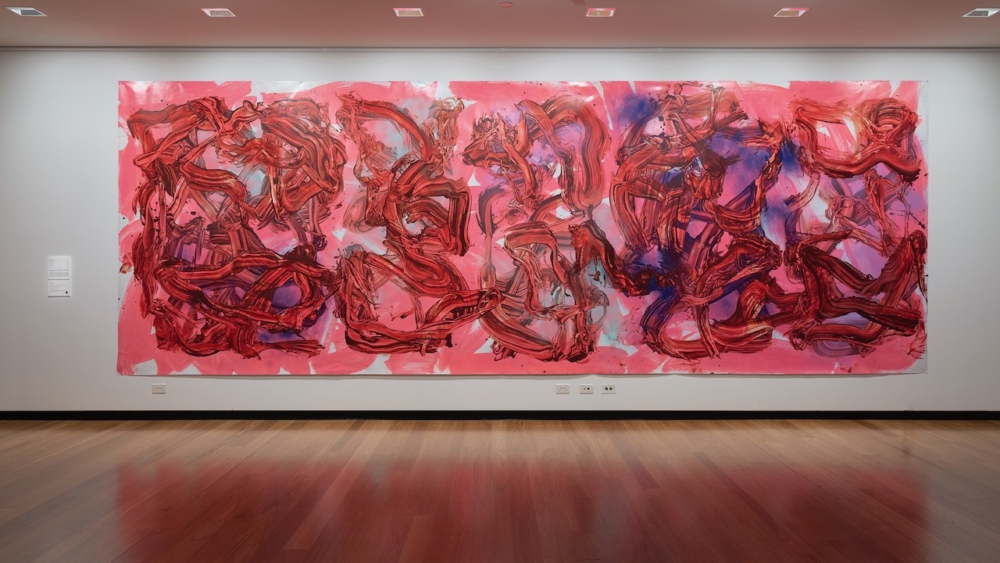
Double Hand 2020 acrylic on billboard vinyl 250 x 690cm included in Expanded Canvas – group exhibition Baroondara Town Hall Gallery, Melbourne, Australia 23 April – 2 July 2022
Whipped Up World. 27 January 2022 – 26 February 2022 Robert Heald Gallery, Wellington, New Zealand
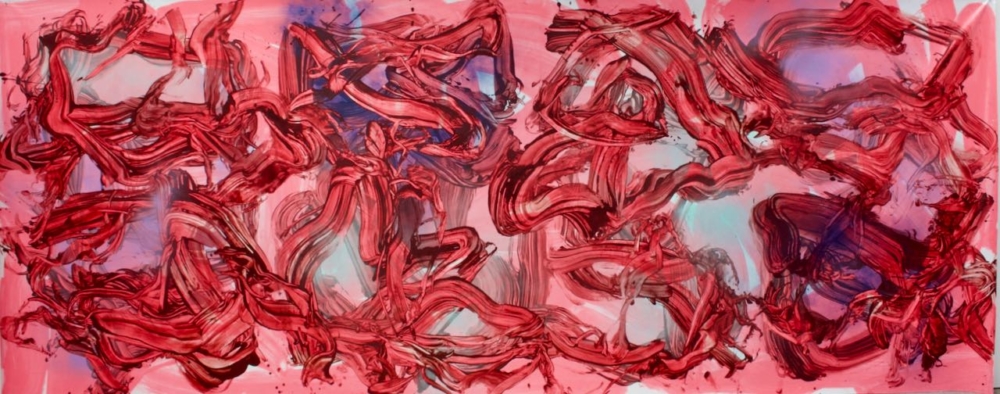
Gow Langsford Gallery and Tim Melville Gallery, Auckland, present 2 in 1: Judy Millar and Alberto Garcia Alvarez a two gallery exhibition curated by Stephen Bambury. 5 August – 29 August 2020. A catalogue will be published to accompany the exhibition.
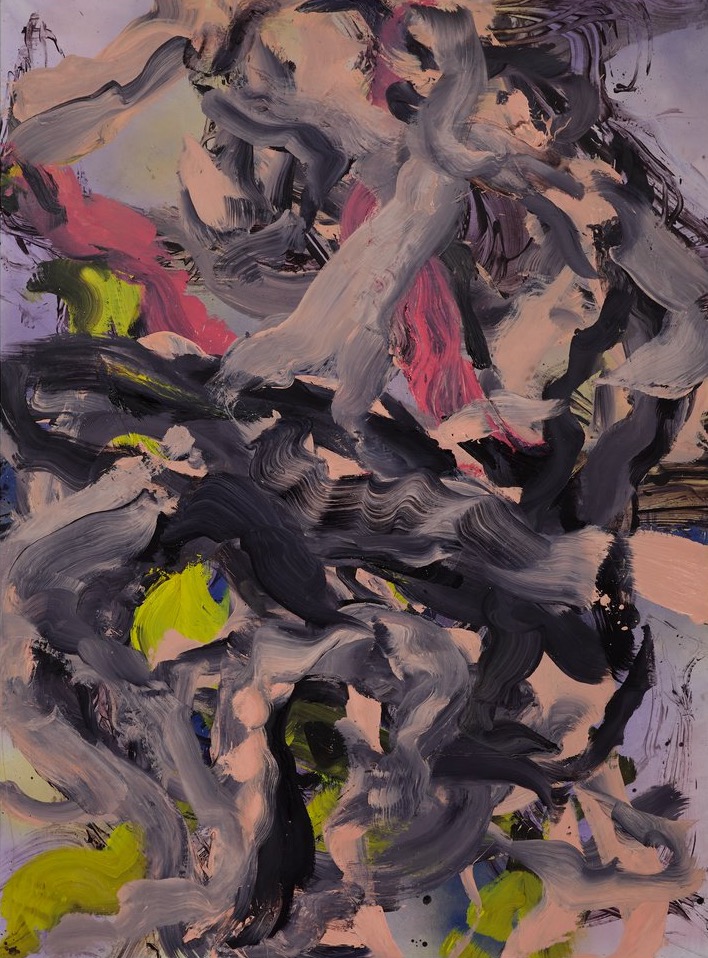
Robert Heald Gallery Wellington, New Zealand presents Paintovers – Opening 12 March 2020
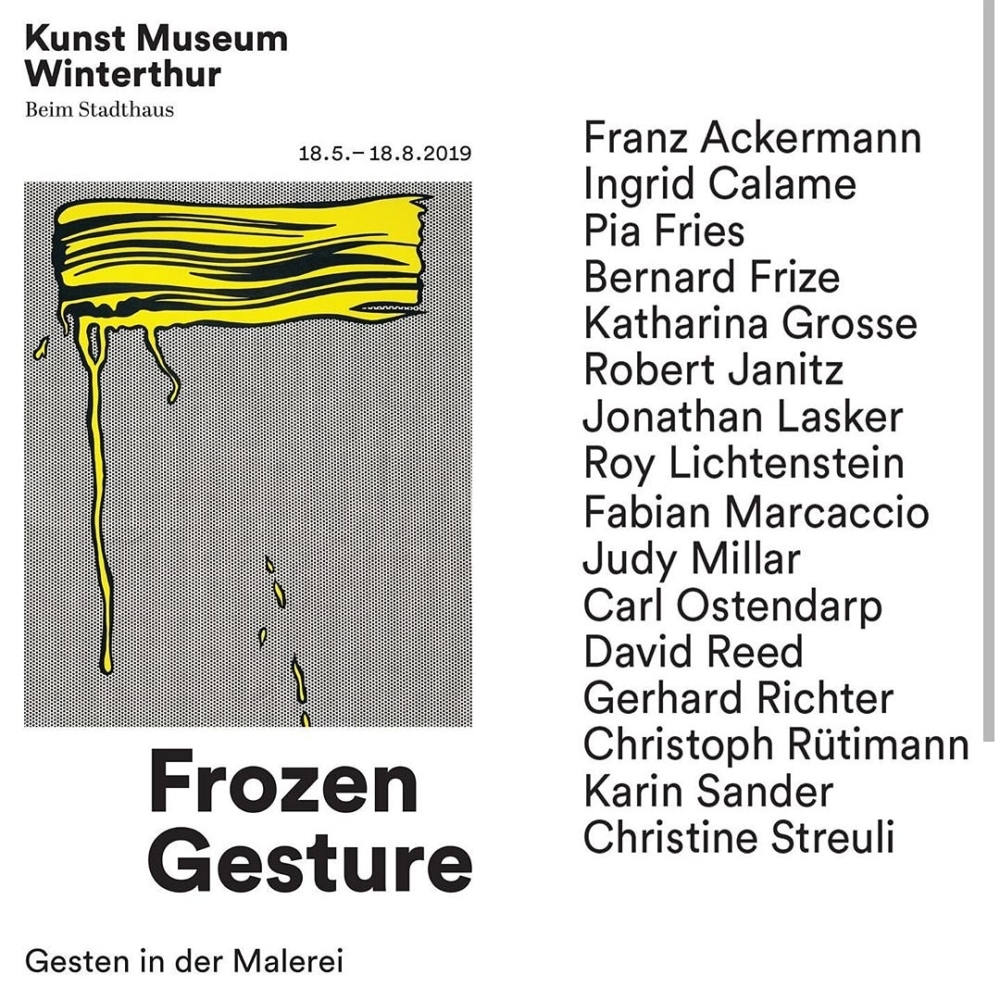
Frozen Gesture Kunst Museum Winterthur, Switzerland. 18th May – 18th August 2018
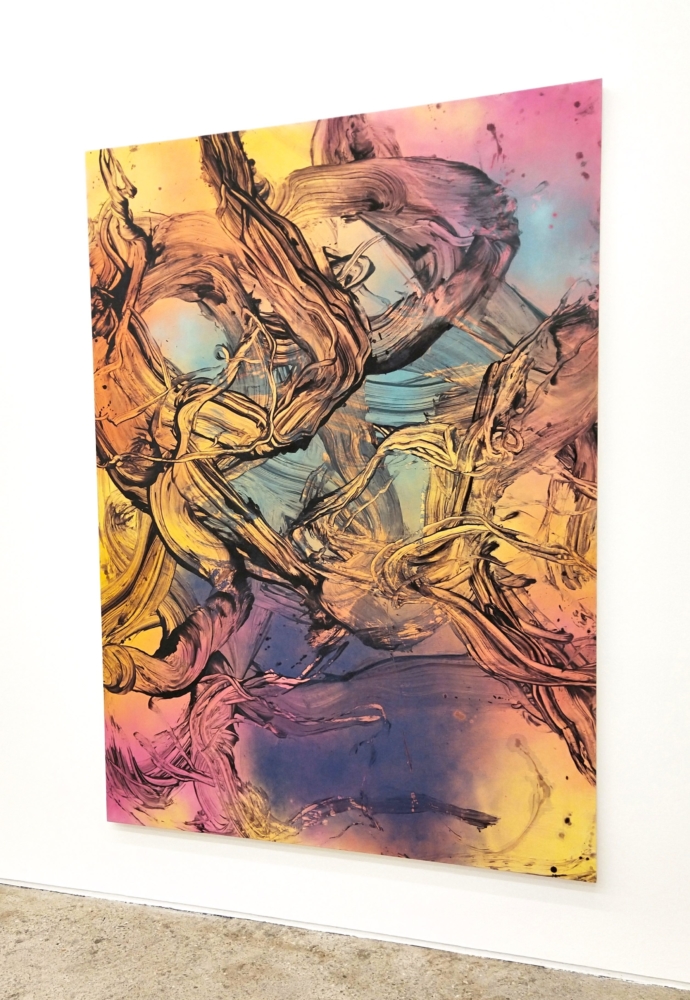
Galerie Mark Mueller, Zurich presents the group exhibition Single, but happy. 8th June – 20th July
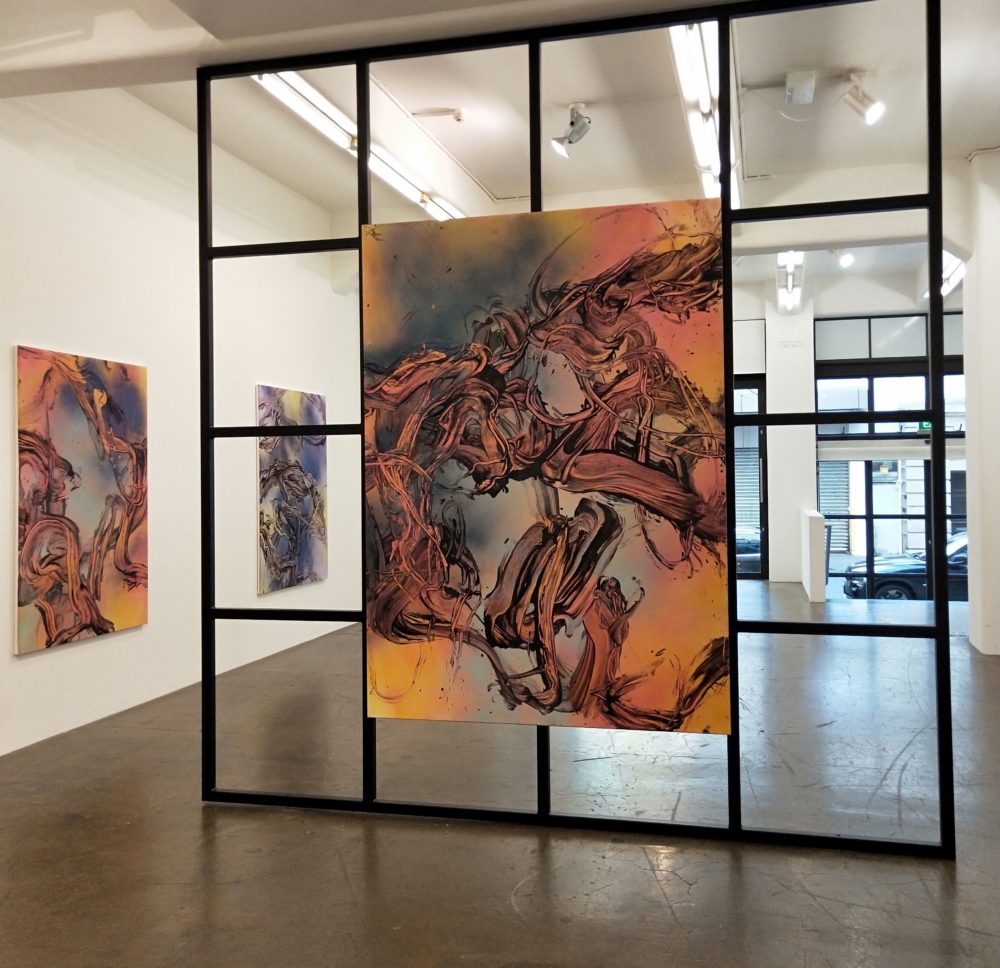
Gow Langsford Gallery, Auckland, New Zealand presents A World Not Of Things, a solo exhibition of new paintings by Judy Millar. 17th April – 4th May 2019
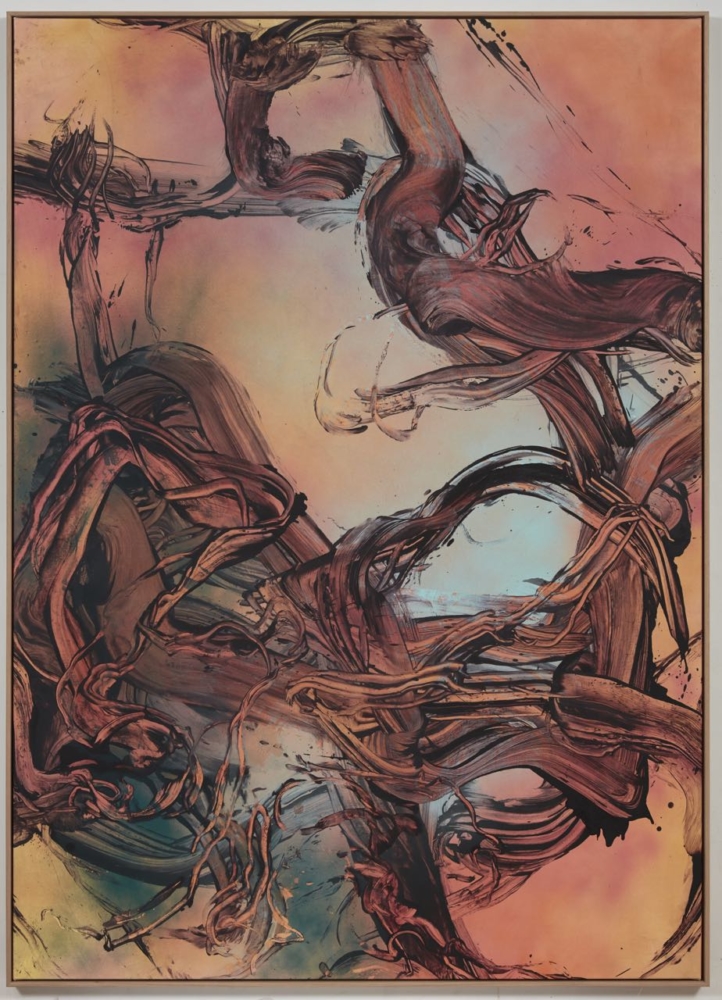
Art Collector Australia interviews Judy Millar about her work in 2019’s Art Basel. Specifically in connection to the late New Zealand painter Colin McCahon’s legacy and his practice in relation to his International contemporaries.
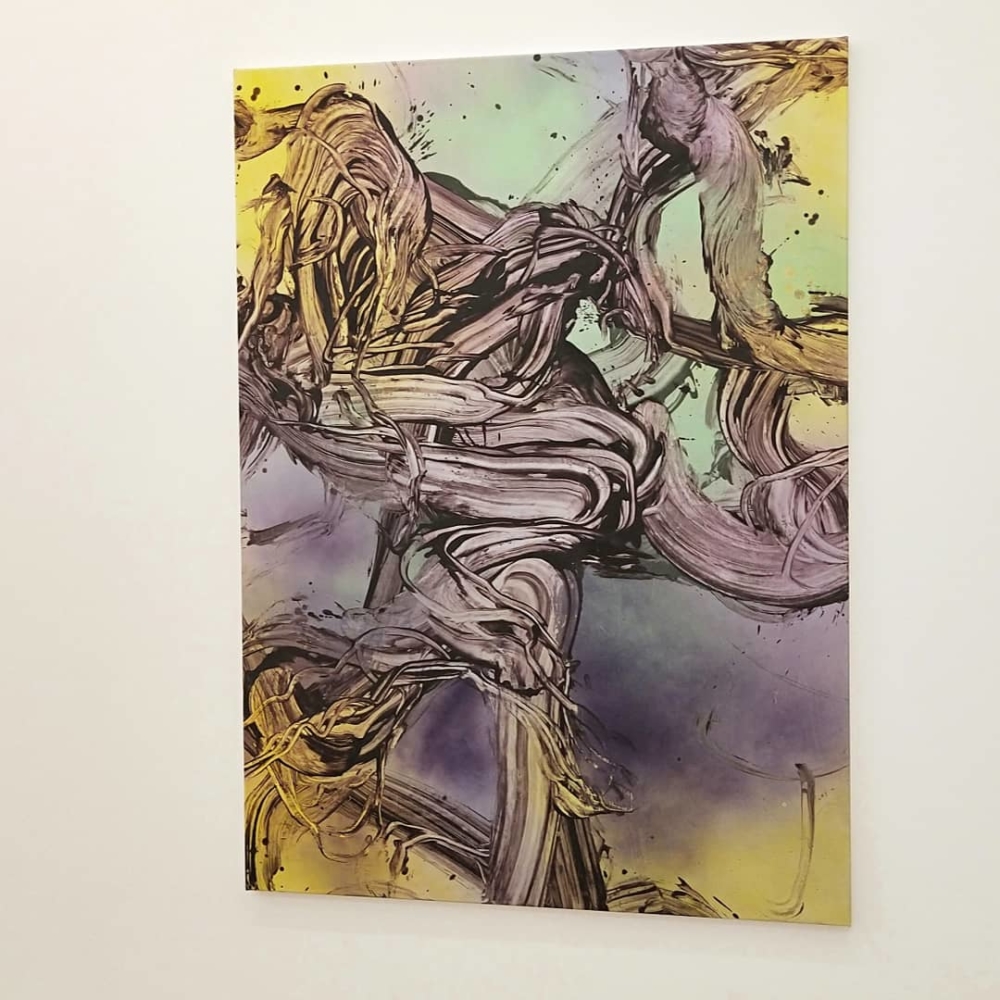
In this new group of works form becomes the graph of activity. The appearance of “things” emerge from the web of painted lines and fields of colour. These things – hard to name but fleetingly apparent, establish a semi-believable pictorial space. These strangely spatial paintings exude an otherworldly luminosity as if emitting light from a distant time and place.
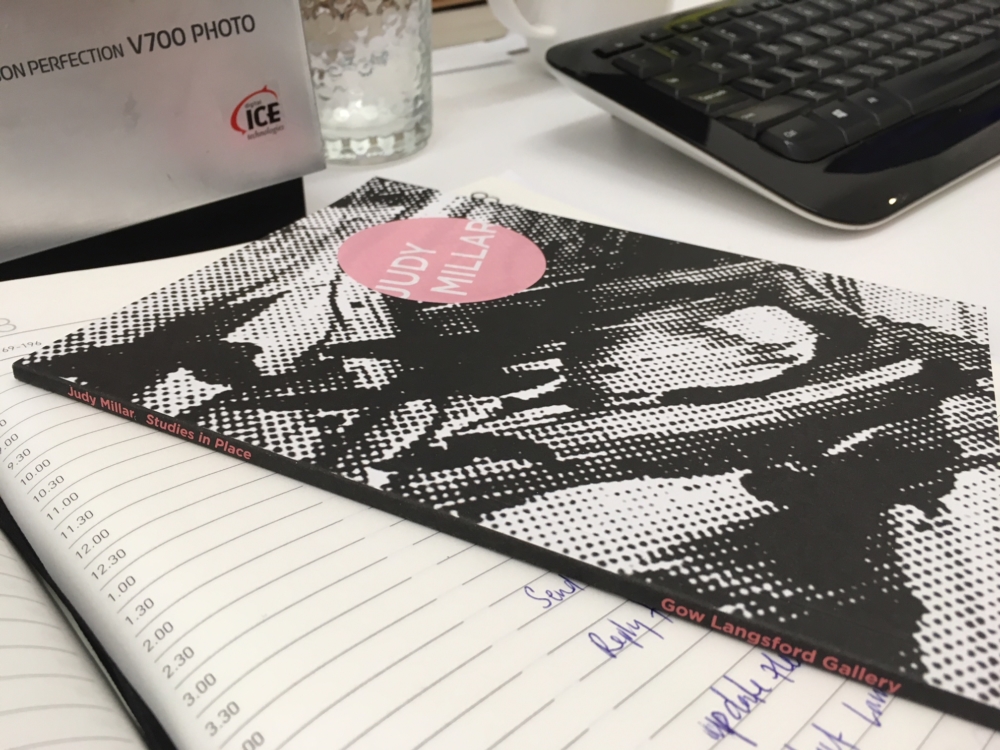
40 page catalogue published to coincide with the exhibition Studies in Place: Works on Paper 1989 & 2017 Gow Langsford Gallery ISBN: 978-0-9941276-2-4
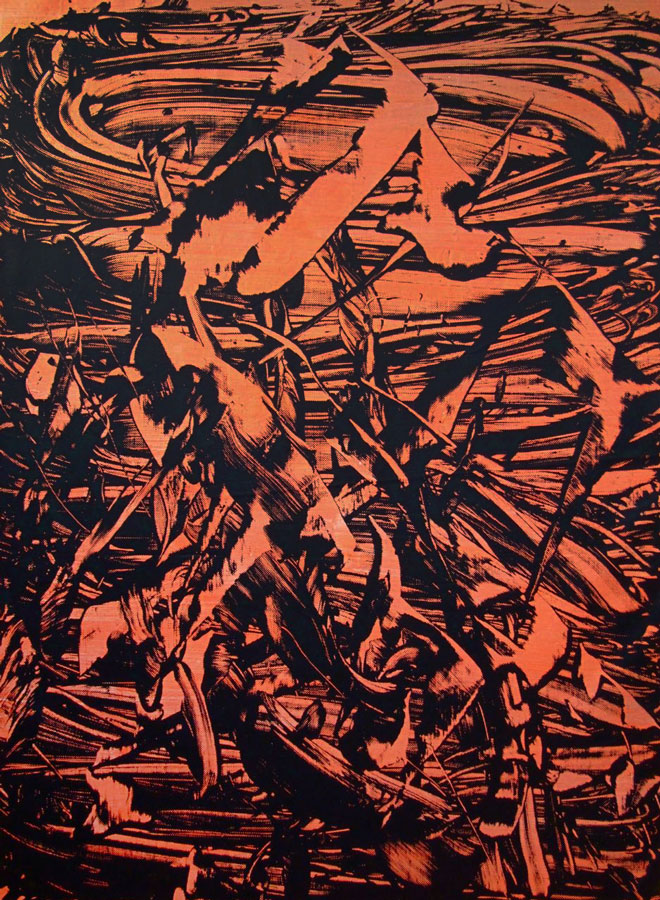
Group Show at the Art Gallery of New South Wales. 9th September 2017 – August 2018.
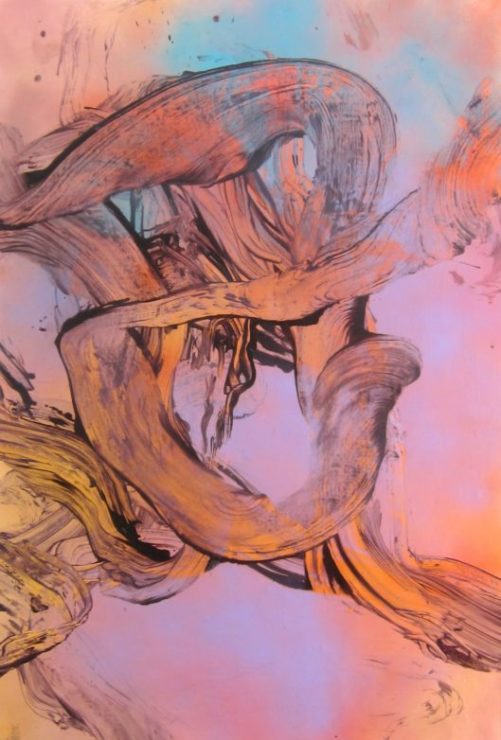
A group exhibition curated by Kate Britton for Sullivan+Strumpf Sydney from 18th August 2018 – 15th September 2018.
Without our body we don’t exist, this to me is our experience of the world and this is what paintings can directly address.
Constant artistic experimentation and mystic inquisitiveness, engage and invigorate.
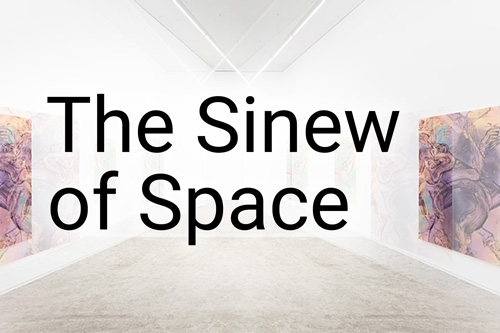
Her work not only activates space but also allows the kind of ‘space creation’ current in philosophy, cultural geography and advanced architectural research.
Solo show at Robert Heald Gallery, Wellington. Jan 25 – Feb 17, 2018.
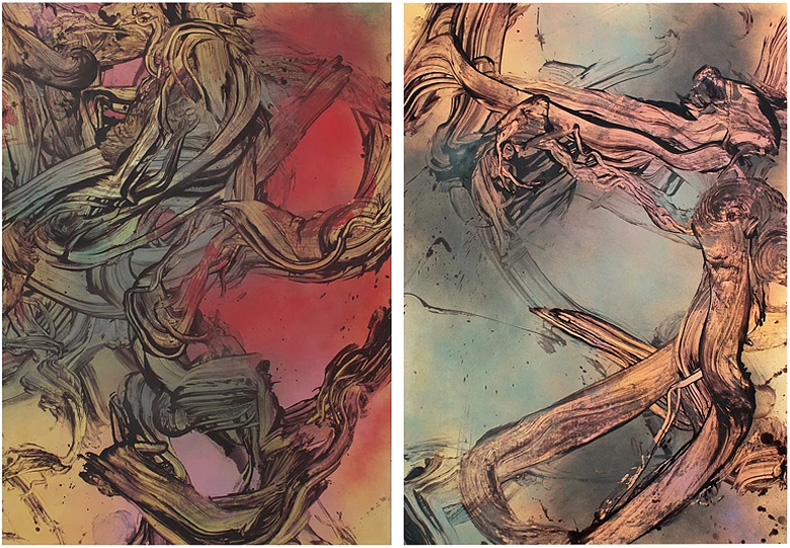
Blood red, jade green, and a bruising purple resonate against yellow and incandescent orange in Judy Millar’s new paintings.
This work plays with the complexity of the vibrant junction between the Victorian, neo-Classical and 21st century architecture of the building.
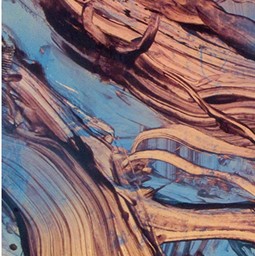
Solo show at Gow Langsford Gallery, Auckland, New Zealand. 2016.
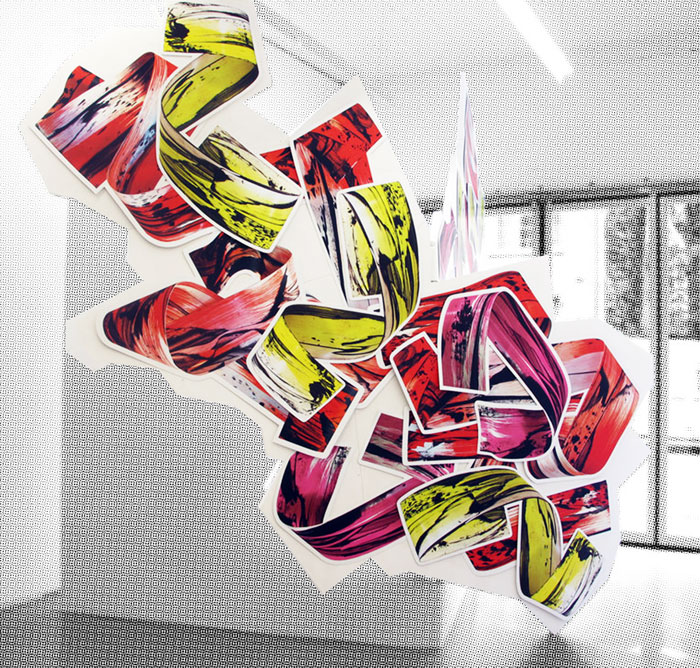
Featuring Advancing All Electric – part of a group show at Galerie Mark Mueller. 2016
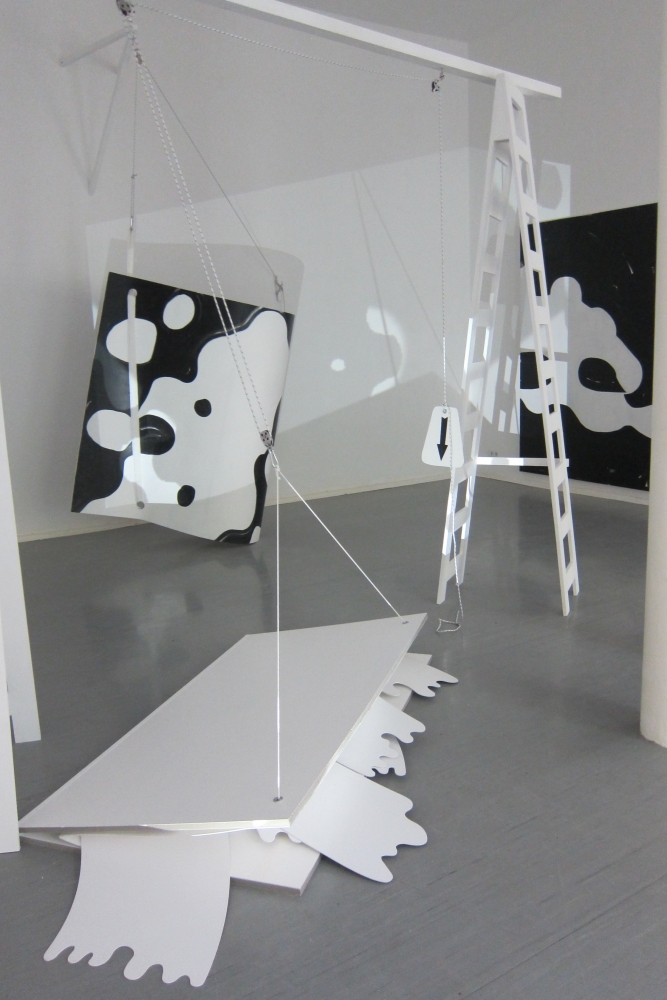
Group show at Frontviews Temporary, Kunstquartier Bethanien, Berlin. 2015.
Multi-media Installation at Te Uru Contemporary Gallery. 2015.
Press release for a solo exhibition at Galerie Mark Mueller. 2014.
An enchanting pop-up book full of Judy’s painted twists, twirls, swells and swirls.
Video of the construction of Space Work 7 commissioned for the exhibition Cinema and Painting, Adam Art Gallery, Wellington. 11 February – 11 May 2014

In response to Judy Millars Be Do Be Do Be Do Solo exhibition at the IMA Brisbane. 2013.
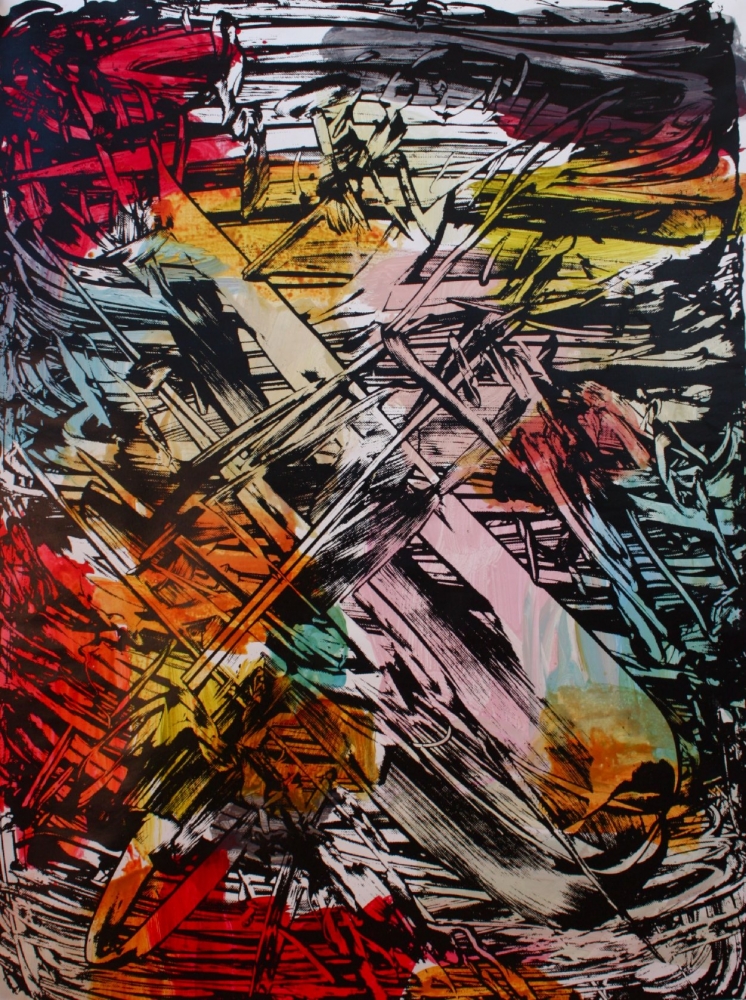
Do Be Do Solo exhibition at Hamish Morrison Galerie, Berlin, Germany 25th October – 16th November 2013. ...
Do Be Do Solo exhibition at Hamish Morrison Galerie, Berlin, Germany 25th October – 16th November ...
Solo exhibition at the Institute of Modern Art (IMA) Brisbane. 2013.
Solo exhibition at Sullivan + Strumpf, Sydney, 2013.
Exaggerated enlargements of handmade gestures with vivid colour.
“Contact” outlines a complex portrait of artistic production of the last forty years in Aoteaora/New Zealand.
Commanding brushstrokes of thin paint are wiped, erased and manipulated across the picture plane.
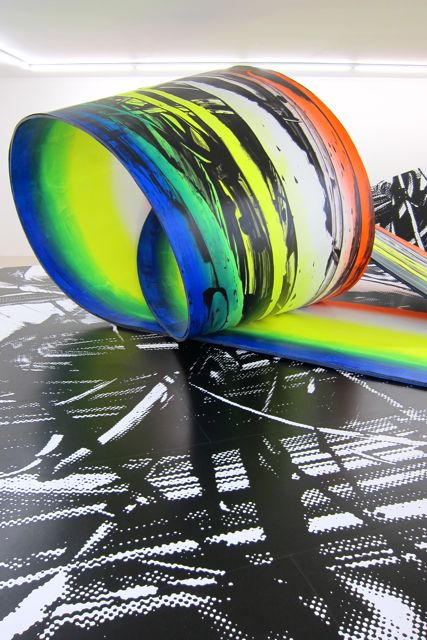
How do we distinguish between illusion and reality? How do we reconcile our physical and mental existence?
Solo exhibition Galerie Mark Mueller, Zurich, Switzerland
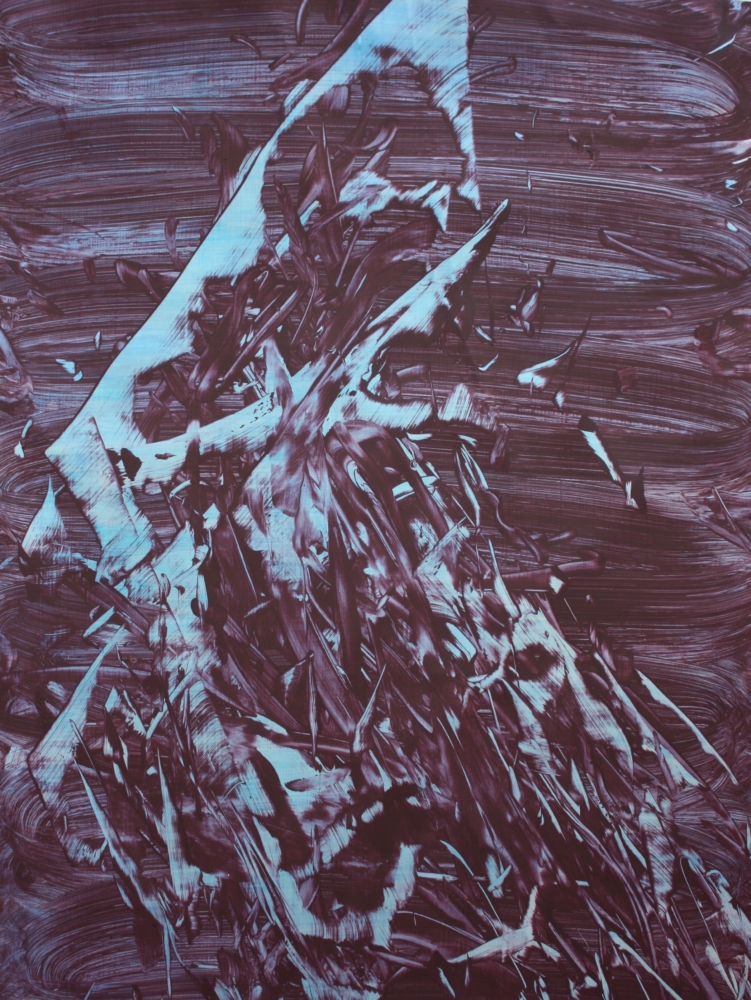
Judy Millar 08 Oct - 12 Nov 2011 A revealing aspect of abstract painting like that of Judy Millar is its minimum referential character. Colors, shapes, and movements cannot be decoded using a canon of signs taken from the world of things but function in a ...
Judy Millar 08 Oct - 12 Nov 2011 A revealing aspect of abstract painting like that of Judy Millar is its minimum referential ...
Solo exhibition Gow Langsford Gallery, Auckland, New Zealand 2011
Video collection of Giraffe-Bottle-Gun from the 53rd Venice Biennale.
Judy Millar
«Questions I have asked myself»
the visual limits
of now you see it
now you don’t
where is the edge of vision?[i]
In hardly any other field than the arts are our (human) limits of perception, consciousness, and comprehension so ceaselessly explored and challenged. It is the artistic search for those very liminal experiences which are able to transport us to different, previously unknown places — places of the in-between, places of the other, places of the “unthinkable”. Ultimately, artists seem to have always been driven by a desire to expand our horizons and “bring together things outside of normal classifications, and glean from these affinities a new kind of knowledge which opens our eyes to certain unperceived aspects of our world and to the unconscious of our vision.”[ii] In some cases, the artistic quest to find these places becomes a crucial part of the approach and of the work itself. They create specific spaces and places based on our shared reality, yet challenging and expanding it at the same time: simultaneously real and unreal spaces, spaces that overturn or transform the everyday – or in other words: heterotopias. The French philosopher and writer Michel Foucault outlines the notion of heterotopia to describe certain cultural, institutional and discursive spaces.[iii] According to Foucault, heterotopias can be “real places — places that do exist and that are formed in the very founding of society — which are something like counter-sites, a kind of effectively enacted utopia in which the real sites, all the other real sites that can be found within the culture, are simultaneously represented, contested, and inverted.”[iv] They are places and spaces that are in different ways separate worlds within our world, mirroring and yet distinguishing themselves from what is outside. What characterizes them is a separation from and a tension with the remaining quotidian space, but in the sense of correlations or resemblances. From this point of view, the work of Judy Millar is as much a heterotopic microcosm as it is a painterly counter-site. At Galerie Mark Müller, the New Zealand painter takes us to various intangible site of escape, containment, rest, pleasure and transformation by exploring our edge of vision.
every attempted annihilation of the image makes it richer
Six large-scale paintings from the past two years come together in the gallery’s main room. Shifting between soft pastel tones and rich violet, blue, and yellow hues, a connecting element is constituted by the ribbons and lines stretching searchingly across the surface of each painting. Like a snapshot of an endlessly moving shadow, the colors applied in part directly by hand bring the duality of Judy Millar’s artistic undertaking into focus: on the one hand, the acrylic and oil paints are clearly visible due to their tangible materiality, as is the canvas as a given and confined image carrier. The paint and its layering are thus traceable and sometimes even addressed in works such as Untitled – Paintover (2020). The paintings are clearly set within a material reality that neither conceals nor masks the fact that they are “made”. On the other hand, both color and canvas are a means to an end that allows the artist to enter a world of illusion, a second reality, in which she confronts us with the works’ incredible depth and irrepressible pull. The painterly gestures seem to reach beyond the edges of the canvas and take on a life of their own. At the same time, each gesture serves a careful attempt to question what is actually visible (and what is not), as Millar seeks to obscure, conceal, and annihilate. Color, too, has a dual function since it serves as both a medium and a mood of sorts. In this respect, the hues and nuances of color evoke an atmospheric or affective tipping point: on a temporal level, by recalling the moment of dusk or dawn for instance, as well as spatially, as an in-between space oscillating between material fact and elusive dream.
I am a painter except when I am painting, then I am no-one, no-where, nothing
The exhibition title is borrowed from the eponymous publication, which brings together Judy Millar’s key works from the past forty years as well as notes and drawings from her workbooks. The written excerpts and thoughts that she shares in this catalogue express the exceptional “push and pull” of her thinking and ideas. This tension is just as inherent in her paintings: they convey what is probably one of the most fundamental contradictions of humankind, since we both exist corporeally and inhabit a mental, fictitious world at the same time. It is precisely on this threshold between materiality and illusion, the known and the unknown, the familiar and the new, that Millar explores the visible and the invisible realms through her work. Her paintings are thus able to conjure a heterotopic counter-site or a placeless place, so to speak, that brings together two colliding realities. The artist herself might describe this place as “no-where”. But even nowhere is indeed somewhere.
Marlene Bürgi
[i] The following quotes are excerpts from the catalog published in 2021 entitled “Questions I Have Asked Myself” by Judy Millar, which not only gives its name to the exhibition at Galerie Mark Müller, but is an important point of reference.
[ii] Georges Didi-Huberman, Atlas: How to Carry the World on One’s Back, Exh.cat. Museo Nacional Centro de Arte Reina Sofia, 2010.
[iii] Although the concept of heterotopia is highly contested, some theorists have explored it, while acknowledging its incompleteness and lack of clarity. In this particular context, it serves as a possibility to converge two independent spheres – an actual site (the painting as such and its materiality) and a counter-site (the world of painterly illusion and fantasy) in order to become a namable entity. Michel Foucault writes and talks about heterotopias on three different occasions between 1966 and 1967. The most well-known explanation of the term is given in a lecture entitled “Des Espace Autres” in March 1967 to a group of architects. See Michel Foucault, “Of Other Spaces: Utopias and Heterotopias”, in: Architecture/Mouvement/Continuité, 1984.
[iv] Foucault 1984, 3. Moreover, Foucault describes a bewildering set of examples, including utopian communities, ships, cemeteries, brothels, museums, prisons, gardens of antiquity, fairs and many more.
‘Expanded Canvas’ is a major exhibition at Town Hall Gallery exploring the dynamic and innovative nature of contemporary painting.
The traditional grid and two-dimensional picture planes are replaced by modern surfaces, including drop sheets, sign vinyl, virtual space, and the gallery wall itself. Colour spills, splatters, pools and stretches through the gallery space, in artworks that challenge possibilities of scale, form, colour and gesture. Pigment and brushwork are combined with elements from design, sculpture, animation and textiles to create vibrant and unexpected three-dimensional, virtual and ephemeral artworks.
‘Expanded Canvas’ showcases the ideas and aesthetics that characterise painting practice today, including artworks that reveal the continually evolving nature of the medium when fused with other disciplines and materials.
Featuring: David Harley, Lara Merrett, Judy Millar, Tom Polo, Bundit Puangthong and Huseyin Sami.
Whipped Up World – Review Mark Amery – Stuff 19 February 2022
The title of Millar’s show at Robert Heald Gallery, upstairs in Cuba Street’s Left Bank, speaks straight to my sense of the state of things this week: Whipped up World. At their best, Millar’s large expressive gestural paintings have an extraordinary ability to express a physical and metaphysical experience of space and time, as if unlocking a different dimension.
There are two distinct sets of work here, demonstrating different pulls in Millar’s work. In the first room is the more familiar: a dominance of lithe yet muscular movement of whipping wiped strokes, twisting in and out of deep space. Millar’s abstract work has a highly evolved natural engine of its own. These strokes are at once moving skeletal body parts, sparking twisting electrical synapses, and DNA strands crackling in construction, all set within a rainbow bath of exquisite colour to be found where the ocean meets sky at dusk and dawn.
In the second room, on bigger canvases, the works are denser, with tension and obscuration caused by thick bright slaps of paint, congealed on the surface over deeper stormier pools. There’s nothing calming here – it’s big weather conflict, as if human and nature are in struggle, and the artist meditating through action – as one title puts it – on a ‘’Doubtful Sea’’. I’m put in mind of Millar as a gardener. I find these works harder to resolve as an experience, but there’s something rewarding in the almost physical struggle they put me through.
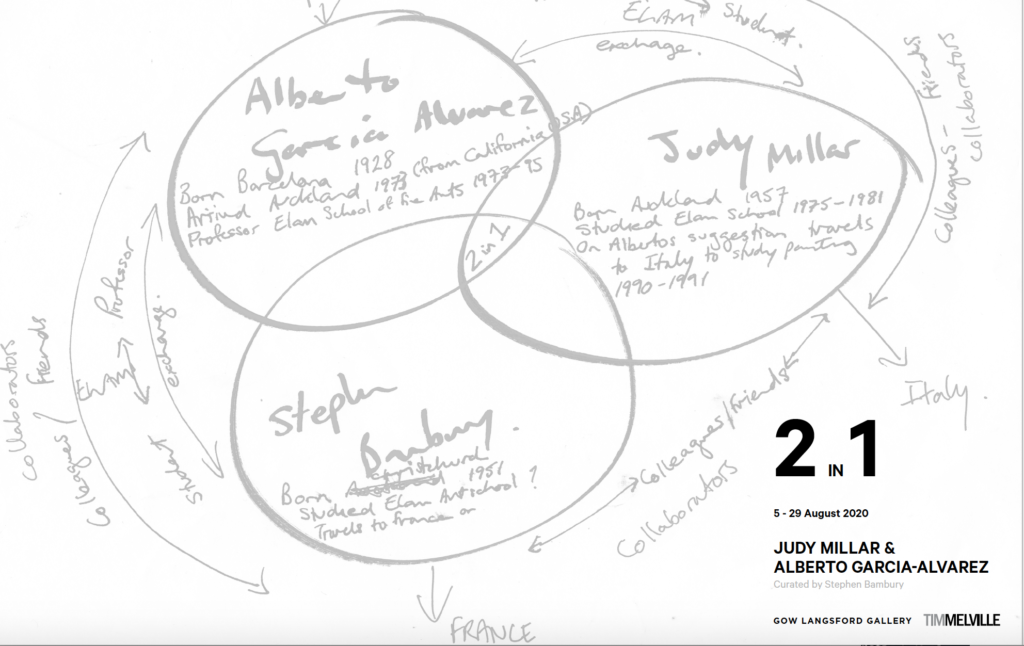
In 1972 Alberto Garcia Alvarez arrived in Auckland from California having been invited here as a guest lecturer at the University of Auckland’s Elam School of Fine Arts. Alberto went on to become a Senior Lecturer at Elam, retiring from the position in 1995.
During his tenure at Auckland University Alberto was an influential teacher. He was sought out by students who were drawn to both his knowledge of international contemporary painting and his deeply curious and enquiring personality.
Judy Millar and Stephen Bambury were two students who found a kinship with Alberto’s relentlessly questioning mind. Both came to regard him as a crucial figure in their own independent artistic developments.
This exhibition featuring the work of Alberto Garcia Alvarez and Judy Millar has been curated by Stephen Bambury and so brings the three together in a public dialogue for the first time.
The exhibition will focus on two distinct periods of Garcia Alvarez’ and Millar’s work. Paintings produced by Garcia Alvarez during his time in California in the late 1960’s have been selected by Bambury to sit alongside paintings painted during the last few years in his Auckland studio. Millar will exhibit work from 1981 when she was a student at Elam together with a number of recent paintings.
The exhibition will be held contemporaneously across both Gow Langsford Gallery, Kitchener St, Central Auckland and Tim Melville Gallery, Winchester St, Newton, between August 4th to August 25th 2020.
A catalogue will accompany the exhibition containing previously unpublished writings by both Garcia Alvarez and Millar.

In 1971 an exhibition of 10 Big Paintings opened at the Auckland Art Gallery. All the exhibited artists were men. 50 years later Millar has painted the eleventh work for that exhibition.
The work was painted during the last months of 2019 as Millar felt urgency in the air and rolled out the largest canvas she could across her studio floor and got to work.
The situation of our current times as Covid-19 creates havoc and heartache across the planet is beyond anything she could have imagined.
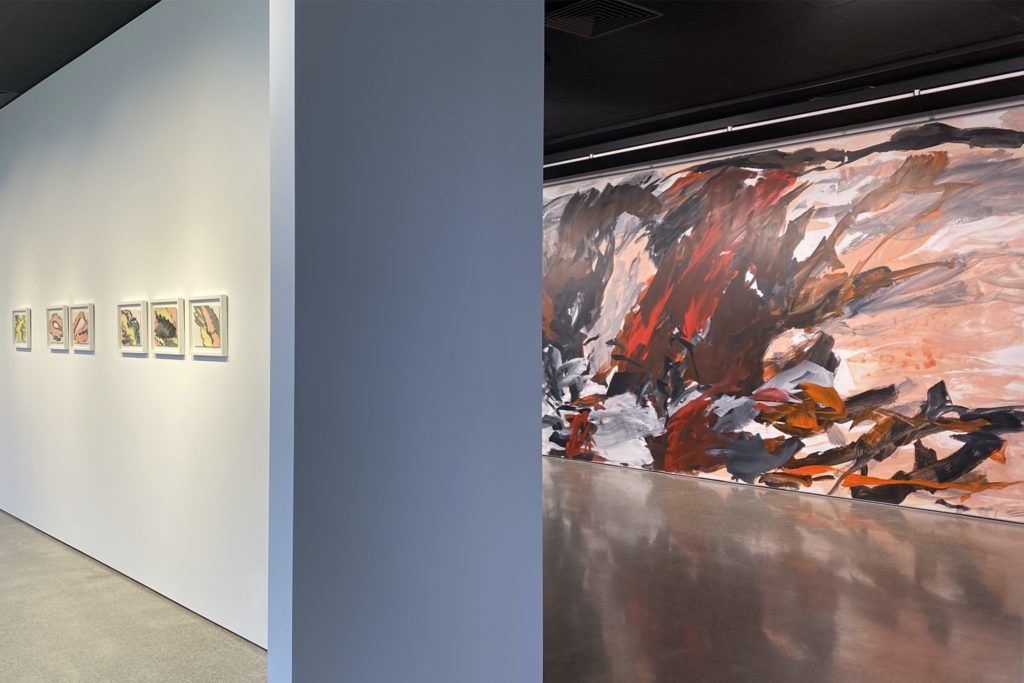
http://www.roberthealdgallery.com, Wellington, New Zealand. Opening 12 March 2020
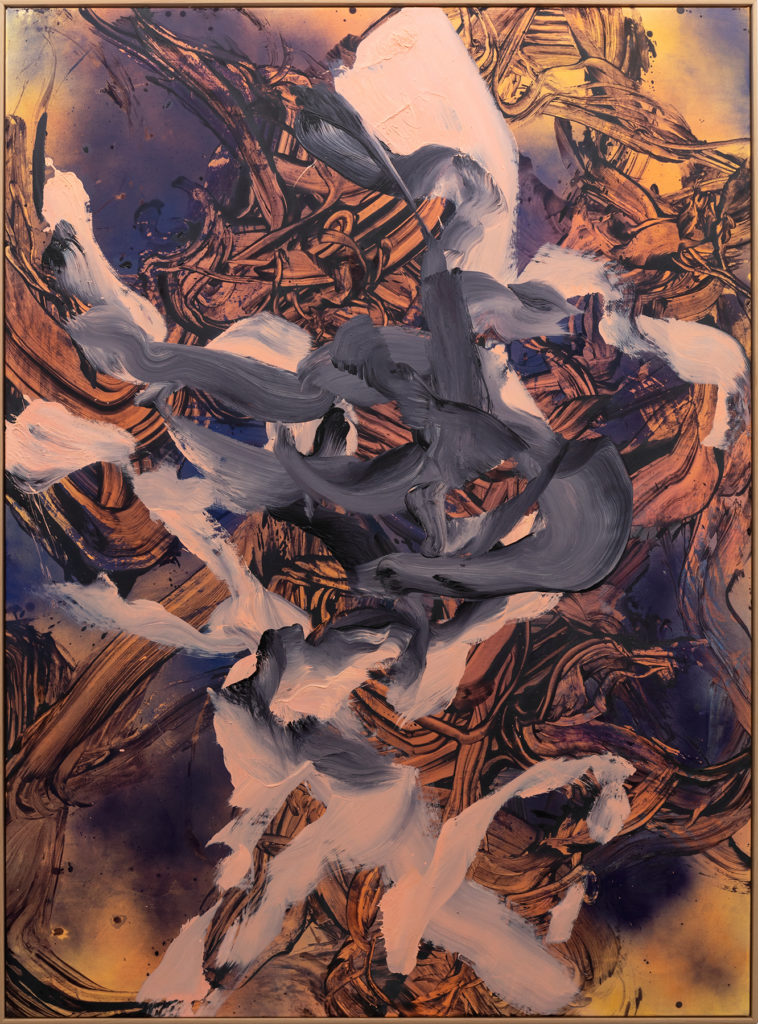

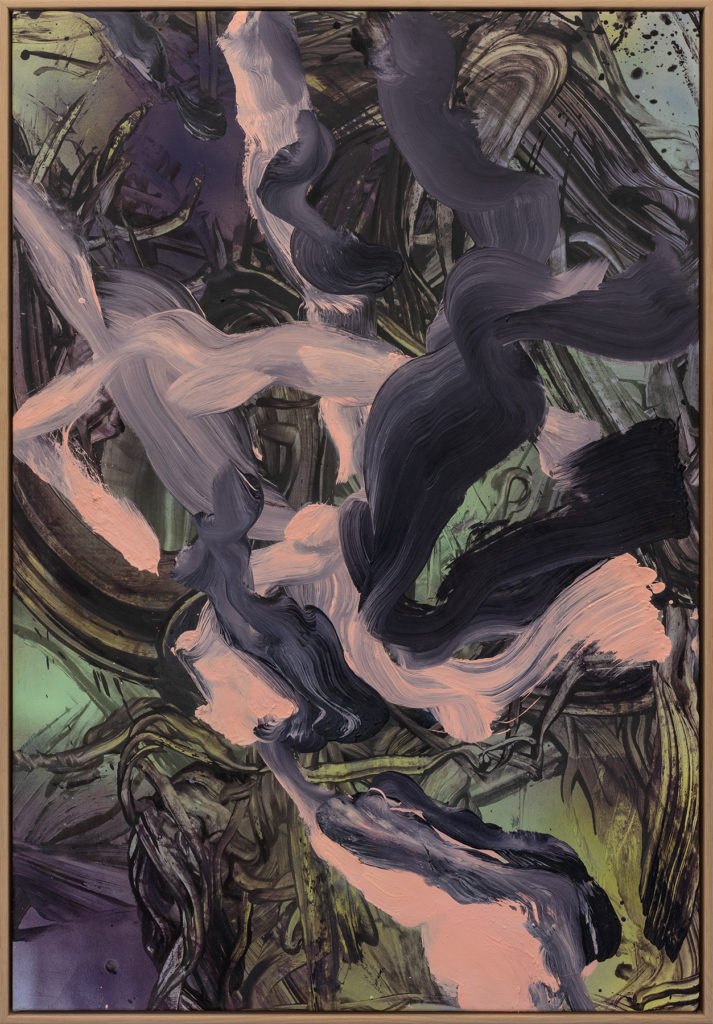
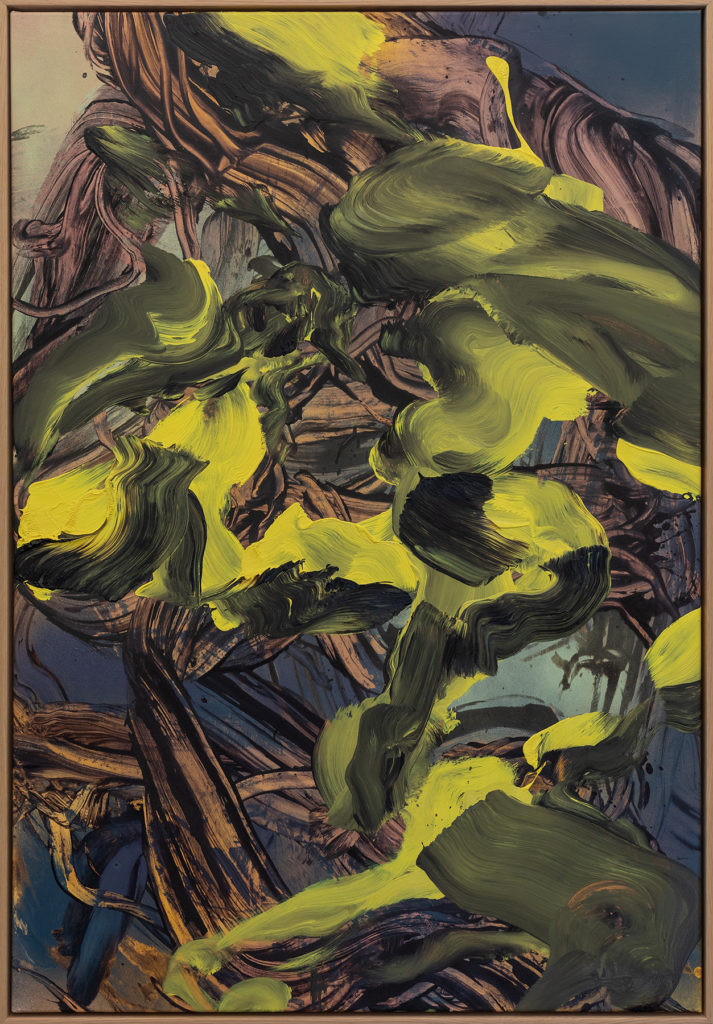
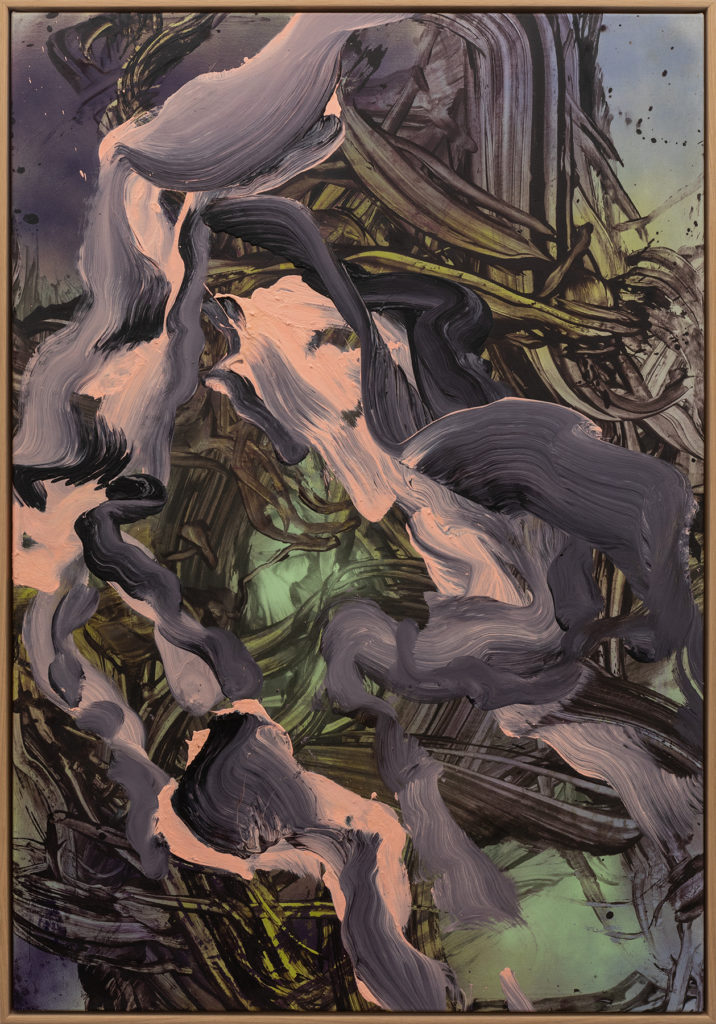
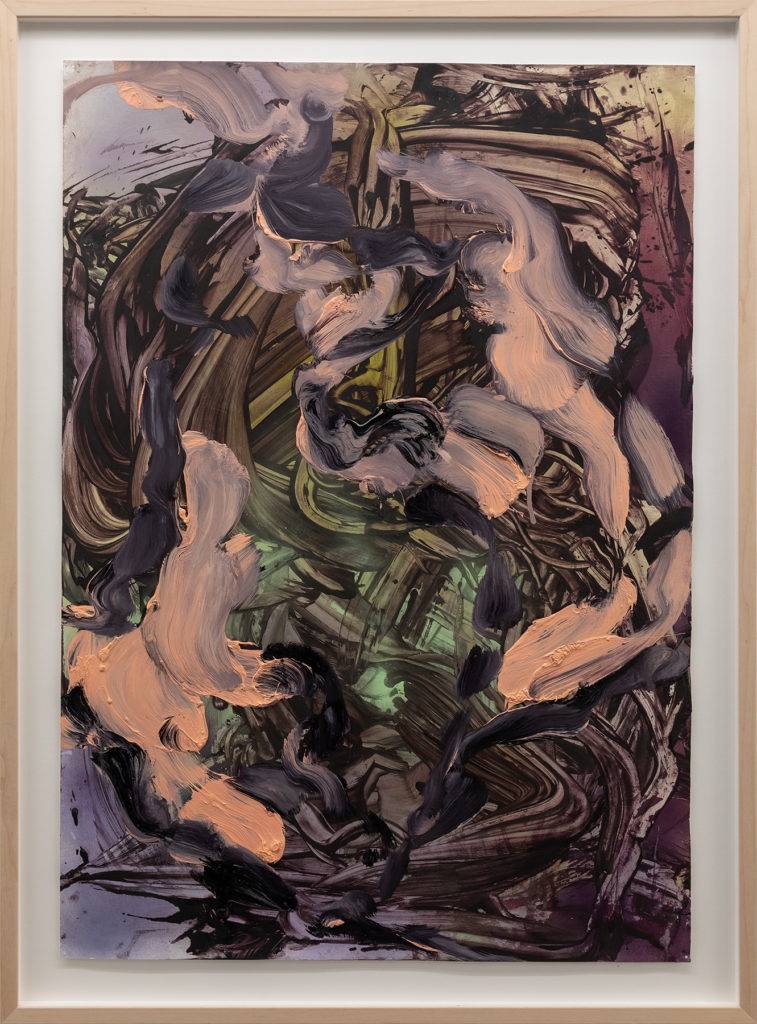
“Untitled, 2005, is both an extraordinary painting in its own right and a key pivotal work in Millar’s œuvre. Alternatively celestial or oceanic, it marks a critical juncture in her practice coincident with the consolidation of her on-going commitment to presence in both Aotearoa New Zealand and Germany and Europe. While pronounced now, this wasn’t necessarily quite so marked when it was first shown in an expansive and experimental exhibition at Auckland Art Gallery “I will, can, must, may, would like to express”from September to November that year. It was the most difficult painting in the exhibition, a building site painting or work in construction as Millar described it in an accompanying exhibition brochure. Certainly unruly, anarchic, even within an exhibition that challenged assumptions as to what painting might entail, it escalated the core motivations of her practice at that time. In an exhibition filled with actual and potential jumping off points, this painting was the most extreme, the most risk-taking and, in a very precise sense given it is such an important concern for the artist, in retrospect it seems to have been the most present.”
P. Shand 2019
18th May – 18th August 2019
In 1965 Roy Lichtenstein created his famous brushstrokes and in so doing transformed the subjective gesture of heroic Modernism into a trivial comic drawing, transposed into the large format of a museum.
Konrad Bitterli, Lynn Kost, and Andrea Lutz curate the extensive Frozen Gesture exhibition – a sheer range of gestures in contemporary painting, presented by Kunst Museum Winterthur. The exhibition brings together important individual pieces by outstanding protagonists of Abstract Art, such as Gerhard Richter and David Reed, with extensive work groups of contemporary artists such as Franz Ackermann, Pia Fries and Judy Millar – to create a fascinating display of works of exceptional painterly quality and inconceivable sensory appeal.

The spontaneous movement of the brush on canvas mutated into a quote, the emotional exploration of depth morphed into a Pop surface in signal colors. The purported immediacy of the expressive painterly act thus became an ironic reflection on the medium of painting using the means of mass culture.
This distanced and self-reflective approach had defined contemporary painting since the end of Modernism. It highlighted the fundamental elements of the image, such as the appearance of the colors and the pigment, the color fields and their limits, and not least the application of paint in the form of a gesture.
This gesture had long since abandoned directly expressing existence in favor of any number of different discursive strategies and painterly approaches. To this day, artists underscore the problematic nature of the impact of the application of color and are forever reinterpreting it – from the gesture as a semiotic abbreviation for painting through to its diverse transformations in images.
Curators: Konrad Bitterli, Lynn Kost, and Andrea Lutz
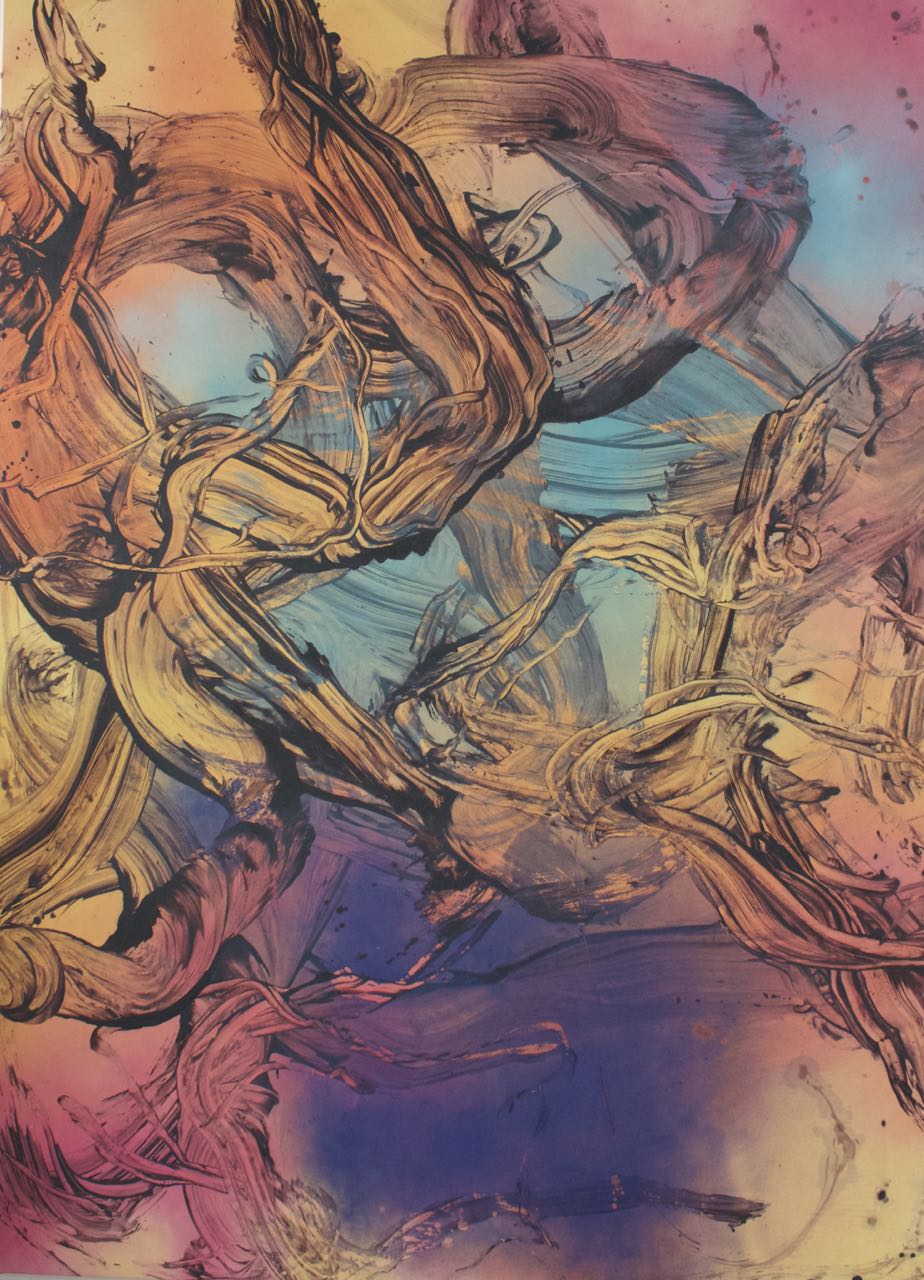
Galerie Mark Mueller presents the group exhibition Single, but happy. Zurich, 8th June – 20th July 2019
17th April – 11 May 2019

Judy Millar, March 2019
I was sitting down to write up notes about this exhibition on March 15th when headlines wrote themselves across my screen. A man and a gun had vented rage and hate against fellow New Zealanders in their time of prayer.
Times like this make you question a life in art, a life that is in itself a kind of devotion. It can seem to lack the necessary force to counter-strike. It can seem too invisible as an influence on everyday life.
The seeming inadequacies of art became even starker when I began to view this desperate act of violence as part of a broader picture appearing around the world. We have long lived in a world that has assumed white superiority but it is fast ramping up, in so many parts of the world, into an outright declaration of supremacy.
We are living in a time where democracy itself seems challenged if not directly threatened. We have reached a point where we make enemies of those who hold different political perspectives than our own. We live in a time where we ‘unfriend’ those who challenge or criticise us. Where we object to listening to opinions we don’t already fully agree with and where we respond with outrage to views that clash with our own. All of these attitudes and behaviours run counter to the core democratic principle of respect for differing opinions.
I have always believed that involvement in art is primarily about absorbing different points of view. Being open to art is about gaining the flexibility to look at things from all sides and in doing so to nourish our empathic humanity. But on March 15th I once again had to ask – is this enough?
I still don’t have an answer to that question but while thinking deeply on this over the ensuing days I stumbled on this quote from Simone Weill. In her Notebooks she writes that we are helped by meditating on “absurdities which project light”.
For now this definition seems a suitable definition for art, and one that can give me some hope as to art’s ongoing importance. At the very least I will take it as a definition of my own project.
I have worked hard to light these canvasses from the inside out. I have sought to combine the paradoxes of coloured earth and a suggestion of the immaterial. I have desired a feeling of space and surface coexisting. I have tried to evoke dusk – the time of day that is neither day nor night but is both at the same time. I have wanted to suggest a multitude of things and nothing at all.
I know this is not enough, but for the interim it is what I can offer. I hope that it will encourage contrasting viewpoints. In doing so it might enable the widening of our individual perspectives.
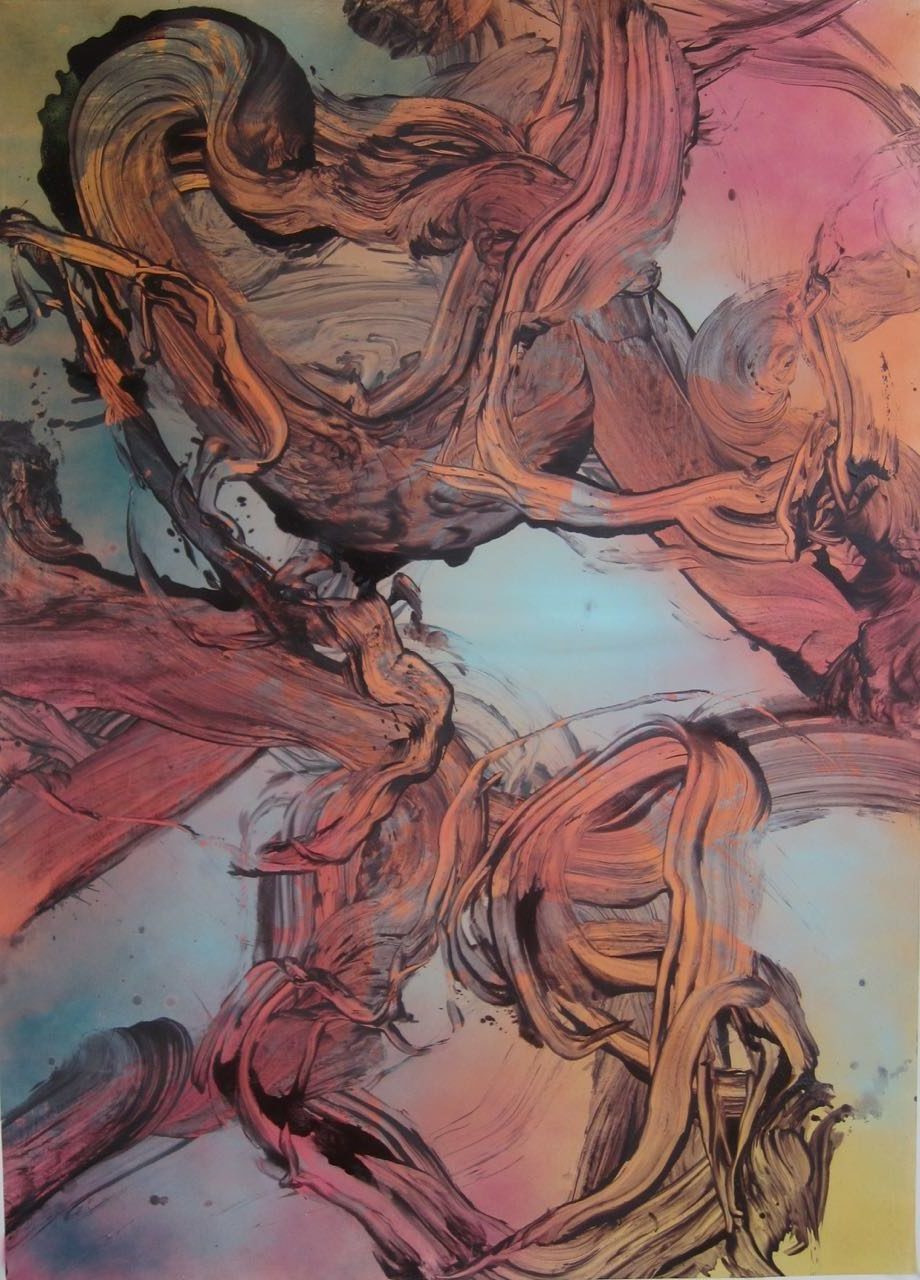
REVIEW
Judy Millar arbeitet sich an der Malerei ab, zerlegt die Geschichte und die Techniken des Mediums. Damit wurde sie zur wohl bekanntesten Künstlerin Neuseelands. Das Kunstmuseum St. Gallen widmet ihr nun die erste große Einzelausstellung außerhalb ihres Heimatlandes.
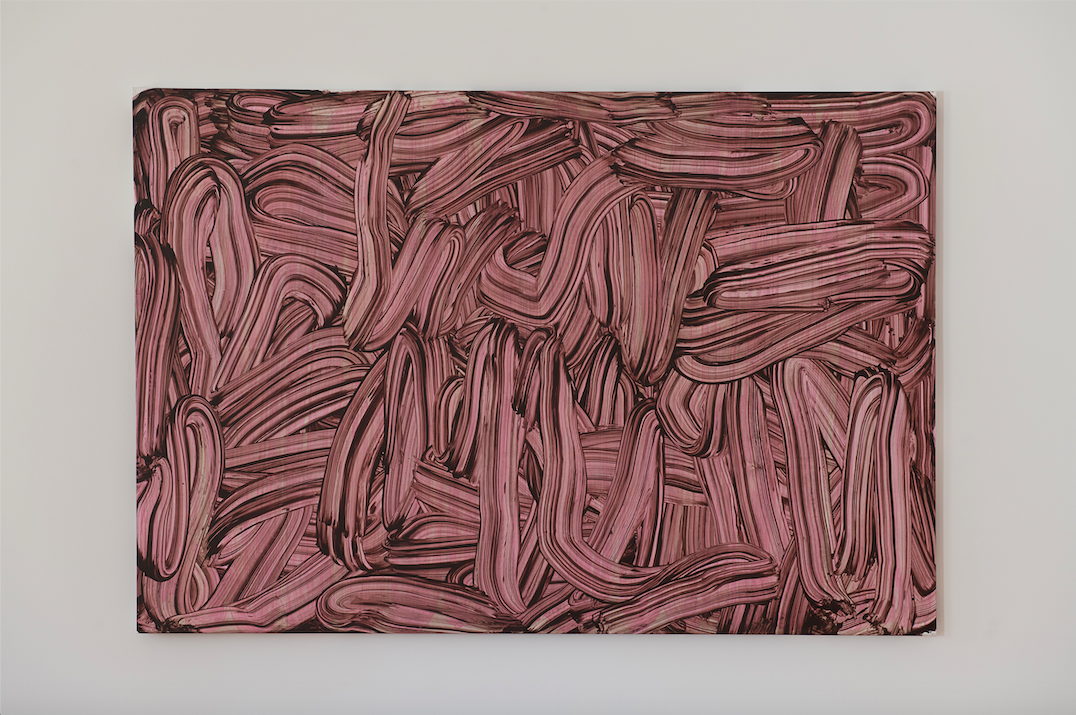
Judy Millar, Don’t Call Me Baby, Baby, 2002, Foto: Sebastian Stadler
Nach eigener Aussage geht es Judy Millar darum, ihren Platz in einem Genre zu finden, das für sie in ihrer persönlichen und künstlerischen Entwicklung keine Vorbilder bereithielt. Der Blick zurück in die Kunstgeschichte der Malerei war für sie primär europäisch und männlich geprägt. Als neuseeländische weibliche Künstlerin hinterfragt sie diesen Kanon distanziert, dekonstruiert ihn bis ins Detail und entwickelt dadurch einen eigenen unverwechselbaren Stil.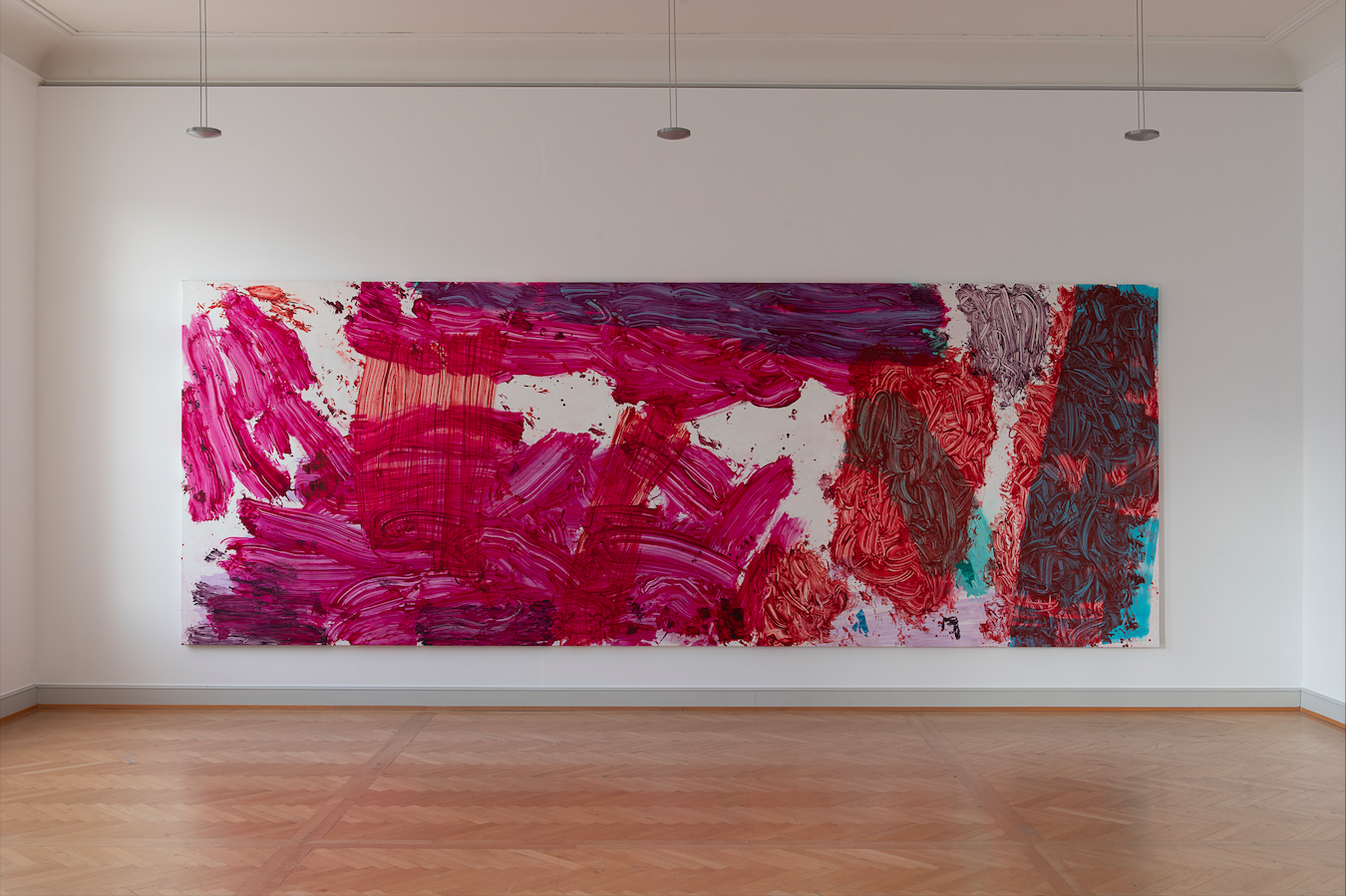
Judy Millar, Untitled 2005, Foto: Sebastian Stadler
Dies zeigt sich bereits an der für sie typischen und sehr individuellen Arbeitsweise, die durch einen Prozess des Wegnehmens geprägt ist. Damit kehrt sie das grundlegende Prinzip der Malerei um: Aus dem additiven Auftragen von Farbe und Material wird ein nicht minder ausdrucksstarker Vorgang der Substraktion. Auf den ersten Blick erinnert der Duktus der Gemälde an intuitiv und dynamisch aufgetragene Pinselstriche. Tatsächlich trägt die Künstlerin Schichten von Ölfarbe auf die Leinwand auf und nimmt diese mit Stoffbahnen oder mit Sand gefüllten Plastiksäcken wieder von der Oberfläche ab. Dies sei − ganz anders als der erste Eindruck vermuten lässt − ein sehr langsamer und kompositorischer Vorgang körperlicher Anstrengung, erklärt Judy Millar. Und tatsächlich sind die in den Werken manifestierte physische Präsenz und der gestische Ausdruck unmittelbar für den Betrachter spürbar.
Millar pendelt zwischen Auckland und Berlin und identifiziert sich mit der aus der räumlichen und charakterbezogenen Distanz entstehenden Ambivalenz der beiden Orte. Zwischen der großflächigen Landschaft Neuseelands und dem dazu in Kontrast stehenden Leben in der Großstadt bildet sie ihre künstlerische Identität und zieht ihre Inspiration für neue Arbeiten. Die großformatig angelegten, raumgreifenden und extra anlässlich der Ausstellung „The Future and the Past Perfect“ in der Kunsthalle St. Gallen konzipierten Arbeiten „It to Them, to Us to I“ konnten somit nur im Kontext der neuseeländischen Weite entstehen.
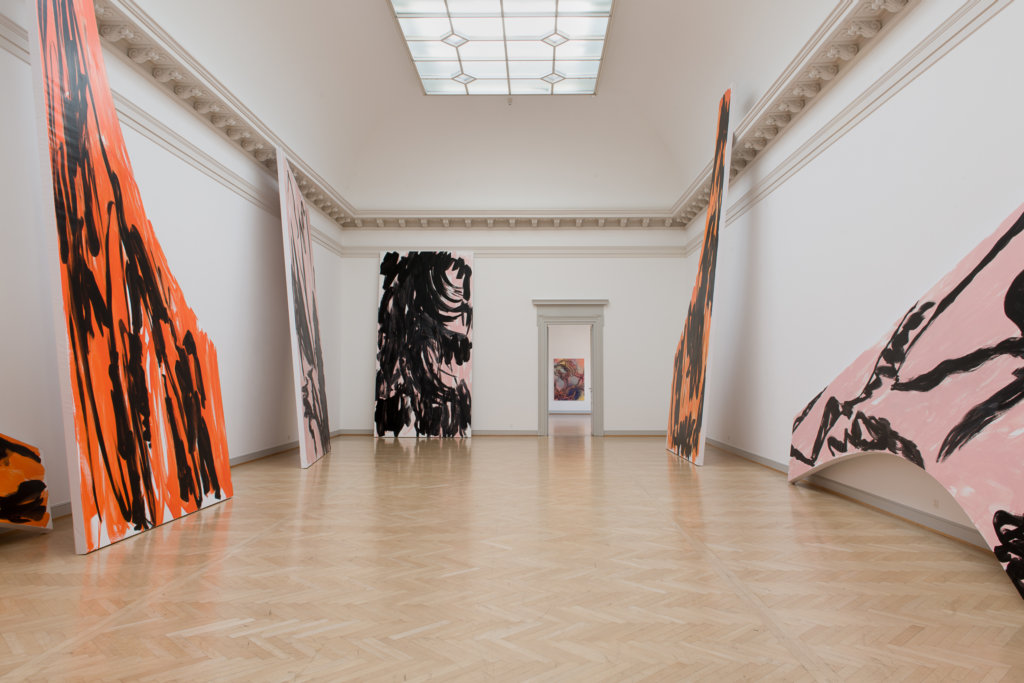
Judy Millar, It to Them, to Us to I, 2018, Foto: Sebastian Stadler
Dabei interessiert die Künstlerin auch das Spannungsverhältnis zwischen Malerei und Architektur. Die Werke sind bewusst überdimensional gestaltet und scheinen die mit Stuckelementen und Bordüren geschmückten Räume des Museums regelrecht zu sprengen. Gleichzeitig geht es Judy Millar dabei aber nicht um eine skulpturale Ebene von Malerei. Sie sieht ihre Arbeiten explizit als Gemälde an und will sie nicht als genreübergreifende Objekte verstanden wissen. Die Kunsterfahrung soll sich deshalb auf die frontale Betrachtung der eindimensionalen Leinwände beschränken. Ein allseitiges Begehen des Raumes, um einen Blick auf die Rückseite der Werke zu werfen, ist gerade nicht intendiert.
Bei Judy Millar geht es in vielerlei Hinsicht zunächst um die Herstellung von Referenzen durch Nachahmung, welche durch eine eigenständige Interpretation aufgebrochen werden. Besonders deutlich wird diese Herangehensweise an Millars Auseinandersetzung mit der Kunstgeschichte der Malerei. Es zeigt sich an der Optik perfekt durchgeführter Pinselstriche, die gar keine sind. Vor allem die jüngeren Werkserien scheinen besonders impulsiv kreiert, beruhen jedoch wie alle Arbeiten der Künstlerin auf einer bewussten Farbauswahl und Durchführung der einzelnen Arbeitsschritte. So wird der Betrachter immer wieder dazu veranlasst, seine eigene Wahrnehmung zu hinterfragen und einen neuen Zugang zur Malerei zu finden.
WANN: Die Einzelausstellung der Künstlerin mit dem Titel „The Future and the Past Perfect“ ist noch bis zum 19. Mai zu sehen.
WO: Im Kunstmuseum St. Gallen, Museumstrasse 32 in 9000 St.Gallen.
Diese Review entstand in freundlicher Zusammenarbeit mit dem Kunstmuseum St. Gallen.
2nd March – 19th May 2019

The Kunstmuseum St Gallen is offering an overview of Millar’s entire oeuvre, which she has created in Auckland and partly in Berlin over the past forty years. Together with her well-known serial paintings with expressive brushwork and broken up spaces, the artist has created a spatial installation of paintings for the Skylight Hall. A surprise is the early abstract geometric drawings from the 1980s shown for the first time in Europe.
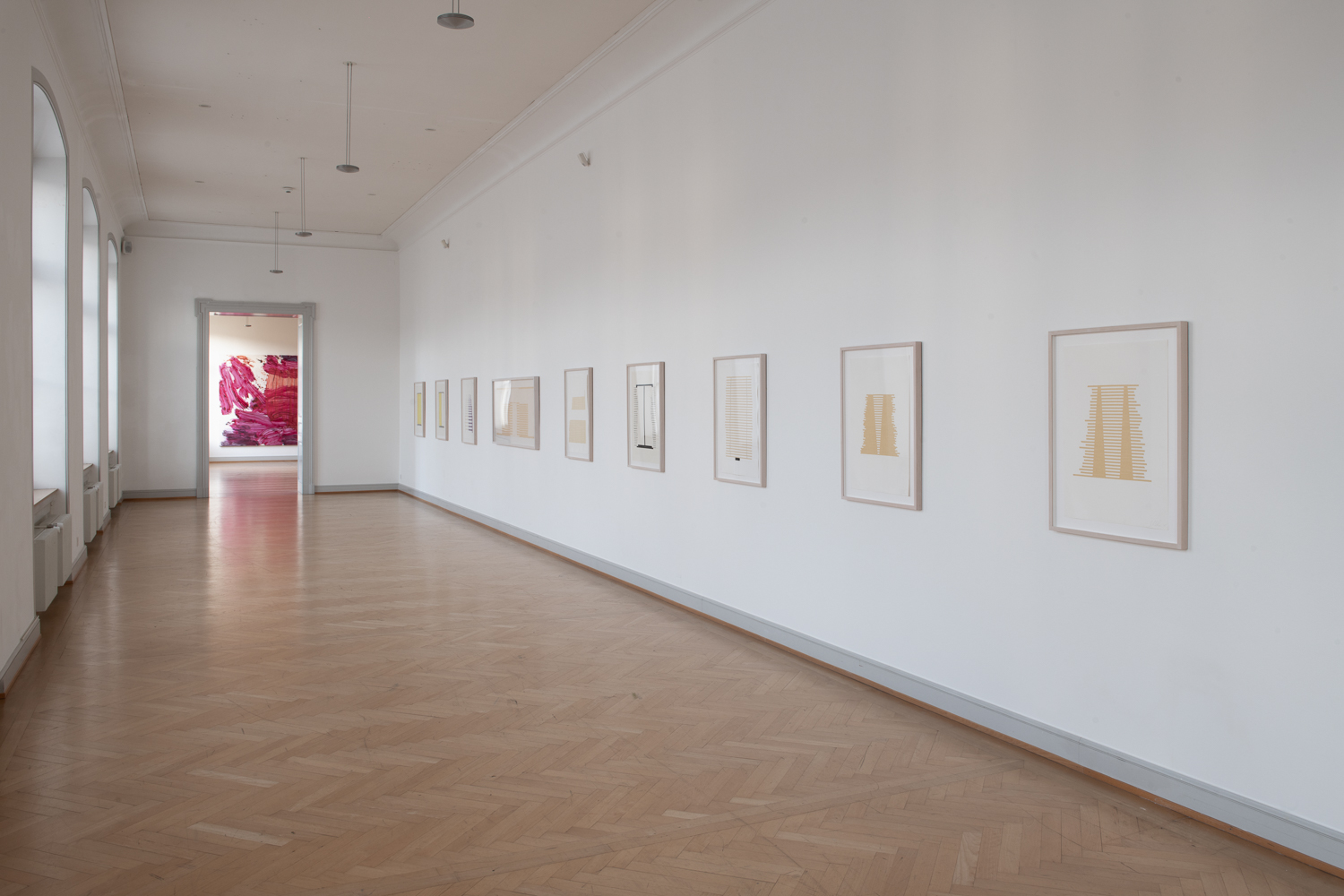

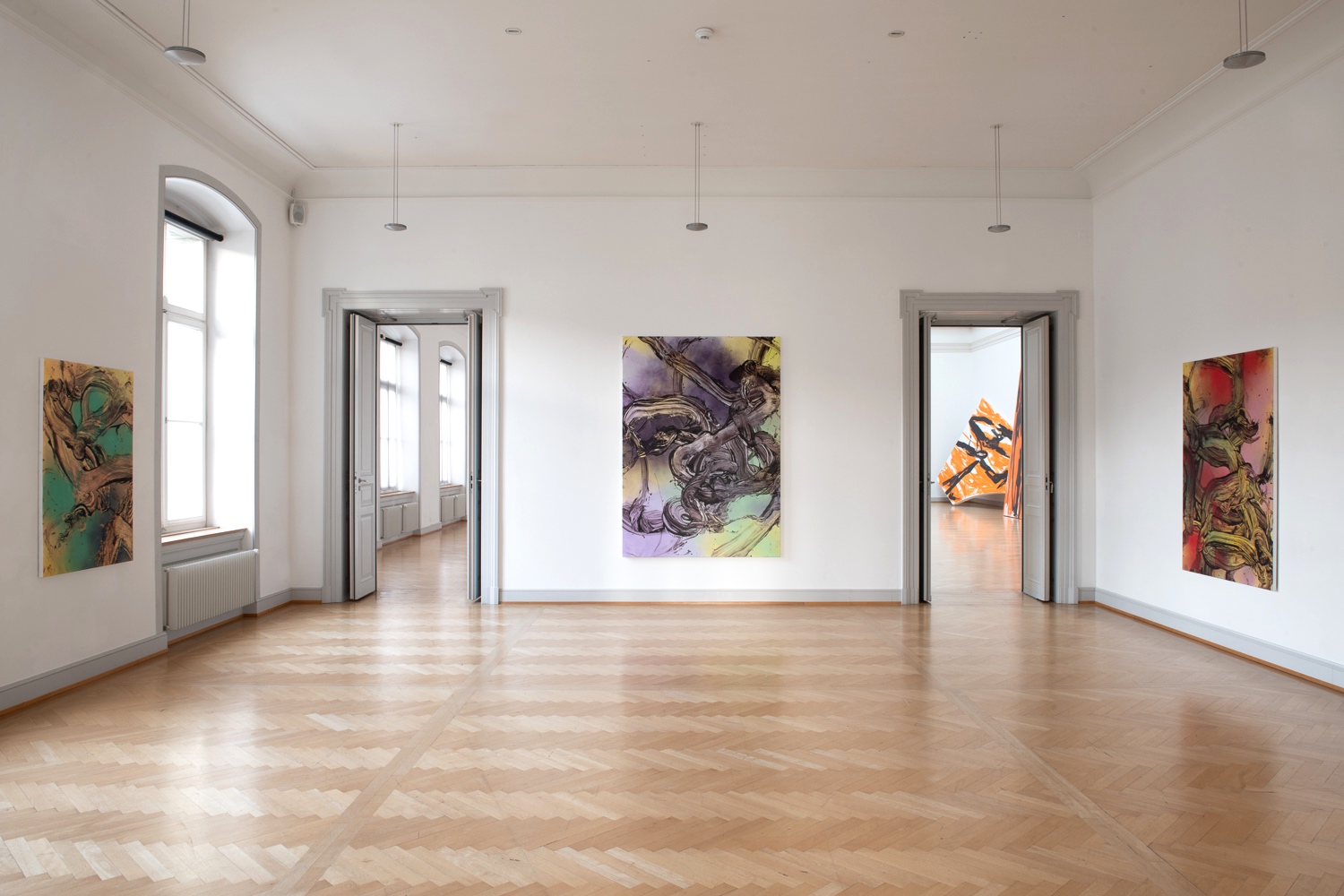
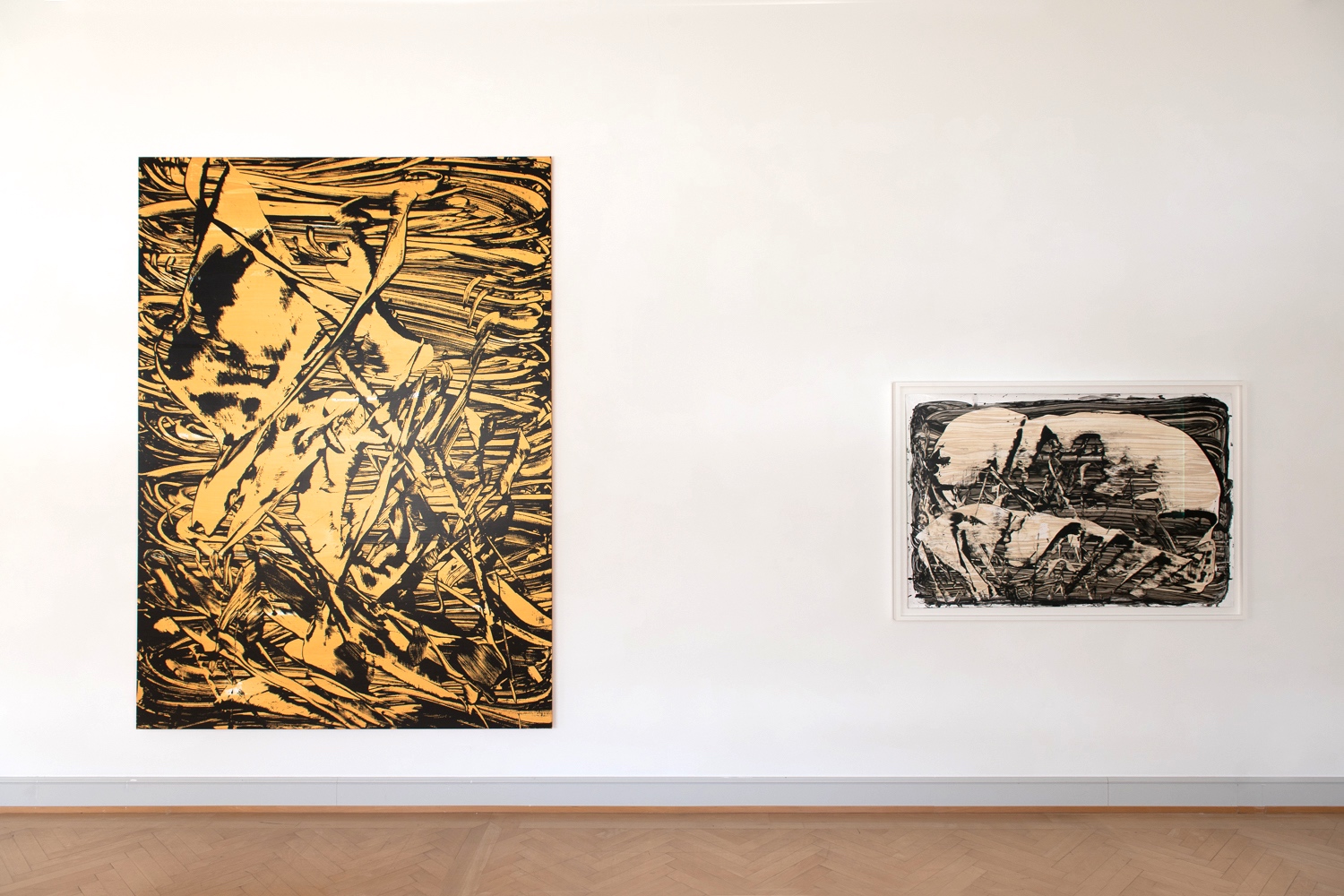
Curator: Roland Waespe
More information.
For Art Basel Hong Kong 2019, Gow Langsford Gallery presents a selection of work that demonstrates the late New Zealand painter Colin McCahon’s legacy and considers his practice in relation to his International contemporaries.
Can you tell me what you’ve been working on for the show?
I am showing new paintings, not exactly made with this show in mind but certainly indebted to McCahon. His oeuvre is so vast and rich that any painter working in New Zealand will find themselves conscious of his presence over and over again.
I recently finished reading Knausgard’s A Time for Everything in which he retells biblical stories, setting them in his homeland. I live on the Tasman seacoast not far from where McCahon painted most of his late works centred on religious texts. The mix of bible story, angels, Noah, coastlines, gannets and rising waters seems to have filled my imagination this summer.
“The telling of great stories set in your own backyard has lead me to seriously reconsider the importance of place. My own works have become increasingly infused with West Coast Auckland. The landscape is always there.”
How would you describe McCahon’s legacy within New Zealand art history?
McCahon was a visionary. He brought an ambition to his work that sought to match the great painters of history. Through his commitment, he laid the ground for art to become a serious undertaking in Aotearoa [New Zealand]. For it to matter, because it spoke directly to an experience of the country as it was. It was as if he banged a stake in the ground and stood by it.
You were the first artist to take up the McCahon House Artist in Residence programme in 2006, which saw you move into a purpose-built studio just next door to the bach [a New Zealand term for holiday house] where McCahon and his family lived in the 1950s. What did you take from this experience?
This time was a complete turning point for me. The bach where the McCahon family lived has been turned into a small museum containing his archived correspondence and tapes of him talking about various things. As a resident you get 24-hour access to the museum. I would go very often at night and sit and listen to Colin speaking. It was as if he was talking directly to me. Telling me to wise up, get serious. It came at the perfect time in my life. In that house you know that art matters.
How does the idea of legacy – of leaving something behind you that has the potential to influence future generations – play into your practice? Has this changed over time?
I’m an art history junky and love to see how things have influenced and do influence other things. But I have the feeling we are in a new world. Everything is on the table now and the pathways of influence will become largely untraceable in the future I think.
What would you say is the most important issue facing New Zealand artists working today?
I think the biggest issue is, as for everyone else, is sustainability. Artists working in New Zealand need to travel a lot and that’s going to be increasingly difficult to justify.
We are also suffering in New Zealand from an absence of genuine critique. Increasingly we are divided into smaller and smaller interest groups that make rigorous expansive discussion impossible; this is making it very difficult to develop complex artistic practices.
13th Sept – 20th Oct 2018
The colour palate is double-edged; reminding us of the moments when nature thrills us with sunsets, sunrises and deep blue lagoons but also recalling the colours of comic books and their depictions of outer space adventure and future doom. Millar, a fan of popular science, describes the activity of painting as a form of space travel.
“I used to think painting was a way of thinking. Now I know it to be much more than that. It is the flash of big-brain meeting small-brain, of consciousness meeting thought or of consciousness meeting mind through the body. Of outer space and inner space colliding.”
In this new group of works form becomes the graph of activity. The appearance of “things” emerges from the web of painted lines and fields of colour. Things hard to name but fleetingly apparent establish a semi-believable pictorial space. These strangely spatial paintings exude an otherworldly luminosity as if emitting light from a distant time and place.
As Millar applies then removes layers of paint from the surface of the works she seems to release energy as if an image has been held in matter and is now freed into visibility.
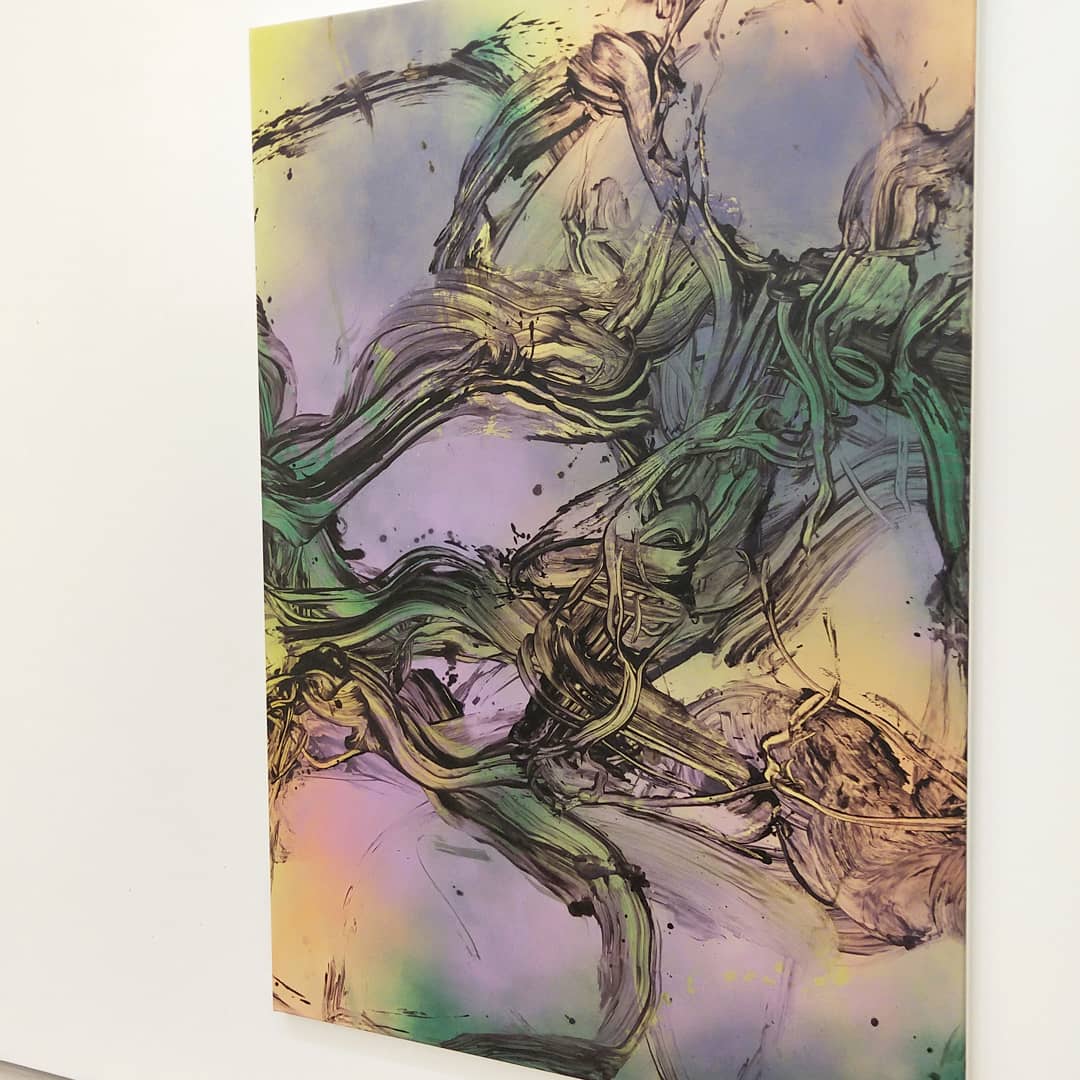
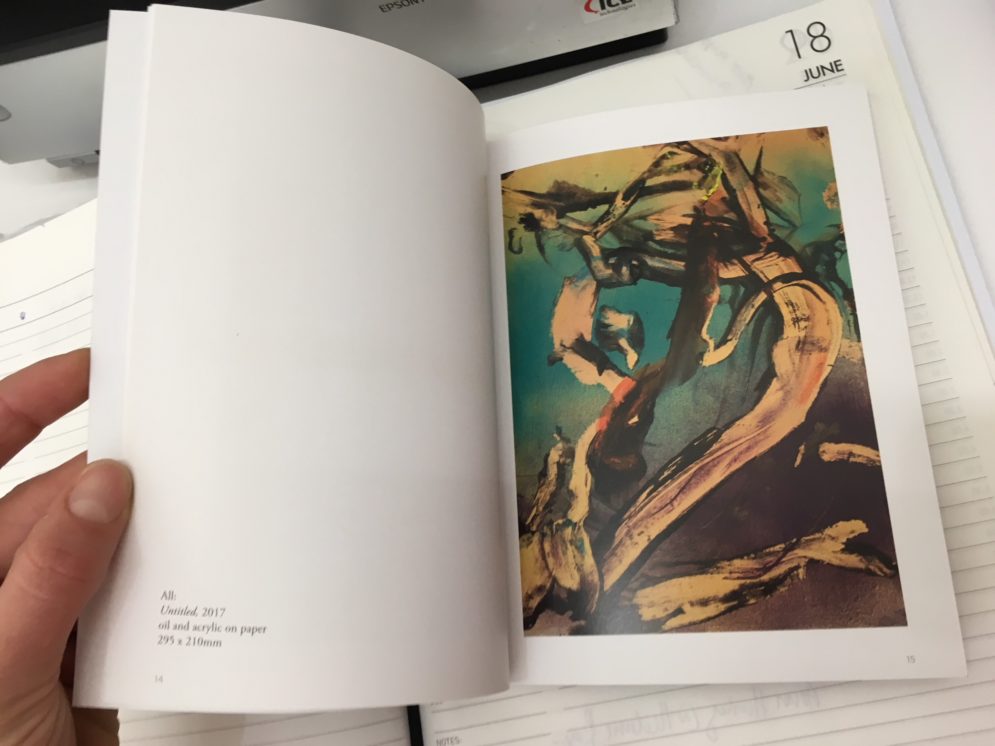
“The first ‘coast works’ in their primary saturations have remained unseen by anyone else since the late 1980s. They have been harshly edited over the years with many being burnt. Those remaining seem now to be a nucleus of thoughts and responses that have emerged decades later.”
9th September 2017 – August 2018
Unconventional and experimental approaches to the age-old discipline of painting
Despite routine declarations of its decline, abstract painting is an urgent and vital mode of artmaking that seems to exist in a state of constant reinvention.
This exhibition surveys Art Gallery NSW’s rich holdings of contemporary abstraction, including artworks by Daniel Buren, Morris Louis, Judy Millar, Dona Nelson and Sigmar Polke among many others.
Unpainting brings our attention to the Gallery’s extraordinary holdings of abstract paintings, focusing on unconventional and experimental approaches to the medium from the 1960s to the present day.
Curator Nicholas Chambers’ introductory essay in the accompanying publication proposes six frameworks to consider the selected works – unpainting, unhinged, unmanned, untitled, unravelling, unending – which highlight an attitude of experimentation, unbound to convention and often underpinned by a restless desire to disrupt the standards of the day.
Three of the contributing artists – Dona Nelson, Christine Streuli and Jessica Stockholder – are also interviewed about their practices and their works in the exhibition.
Exhibiting Artists:
Mark Bradford, Daniel Buren, Ian Burn, N Dash, Angela De La Cruz, Mikala Dwyer, Dale Frank, Katharina Grosse, Wade Guyton, John Hoyland, Albert Irvin, Bob Law, Richard Long, Morris Louis, Judy Millar, Dona Nelson, Sigmar Polke, Mel Ramsden (Art & Language), Robert Rauschenberg, Ugo Rondinone, Josh Smith, Frank Stella, Jessica Stockholder, Christine Streuli, William Turnbull, Andy Warhol.
AGNSW Contributors:
Nicholas Chambers – Senior Curator
Lisa Catt – Assistant Curator of International Art.
A group exhibition lapping at the shores of heteronormative sanctity, curated by Kate Britton
Sullivan+Strumpf, Sydney
18th August 2018 – 15th September 2018
The Waves borrows its title from Virginia Woolf’s novel of the same name, in which many voices unite in a single narrative. This exhibition likewise unites many voices to tell a single yet multivalent story. This story is about what happens in a white cube occupied by women and non-binary voices, and why we should be listening.
The Waves brings a diverse group of artists into a conversation about feminism, bodies, access to and occupation of space, collective action and gestures of intersectionality. In making their work, each of these artists chip away at the walls and barriers that are thrown up by patriarchal systems, biological determinism, trans-exclusionary feminism, colonialism – the list goes on.
The feminist project has been characterised by waves, a lapping at the shores of heteronormative sanctity. The works presented from these artists engage with different aspects of this project: political, social and labour-based action; reclamation and celebration of diverse bodies and identities; intersectionality; and an emergent collective anger – #metoo.
In bringing together work from Sullivan+Strumpf artists with invited artists, The Waves establishes new lines of sight between the work of diverse women and non-binary people.
Karen Black
Ohni Blu
Polly Borland
Barbara Cleveland
Christine Dean
Joanna Lamb
Lindy Lee
eX de Medici
Sanné Mestrom
Judy Millar
Dawn Ng
Thea Perkins
Katy B. Plummer
Justine Youssef & Leila El Rayes
Hiromi Tango
Angela Tiatia
Jemima Wyman
Studies in Place: Works on Paper 1989 & 2017
8th August – 1st September 2018
Studies In Place – a solo exhibition of small works on paper from 1989 and 2017 held at Gow Langsford Gallery. The works from 1989 show Millar’s immediate response to the wild landscape of Auckland’s West Coast when she first moved there soon after leaving art school. The recent works track her newfound reflection on the importance of place; place not only considered as a location but more importantly as a set of determining circumstances.

“I seemed to spend the greater part of my early life searching for a place to look out at the world from. My favourite childhood game was a blanket draped over the family dining table providing a place in which I could secure myself. Hidden within the folds of fabric I could create a new realm that gave me the privacy I longed for.
Virginia Woolf’s “A Room of One’s Own” later confirmed it for me. Every woman needed a space defined for her, by her.
What it was that pulled me to Auckland’s West Coast as a young person I’ll never be completely sure. But there I found the mental freedom I longed for – a freedom that let me define my own existence as if back in the blanket hut. The wild storms neutralised by own inner turmoil: an external and internal pressure meeting and rebalancing one with the other. The sound of wind in the trees and crashing against the house became a valve that allowed me to inhale and exhale more fully.
Then the visuals – the views from up high as if floating above the land. The colours that changed throughout the day reaching a new saturation as each day’s sun set. Overwhelming, yes. But life giving too and so as I began to work I found my body respond in new ways.
The first ‘coast works’ in their primary saturations have remained unseen by anyone else since the late 1980’s. They have been harshly edited over the years with many being burnt. Those remaining seem now to be a nucleus of thoughts and responses that have emerged decades later.
All these small works are the direct result of being in a place: a place that has become my intimate world. The trees and plants have grown with me, around me. The wind has screamed at me and I at it. From the garden I eat. The sea air has seasoned my lungs well. I have both arrived at and imagined a place.”
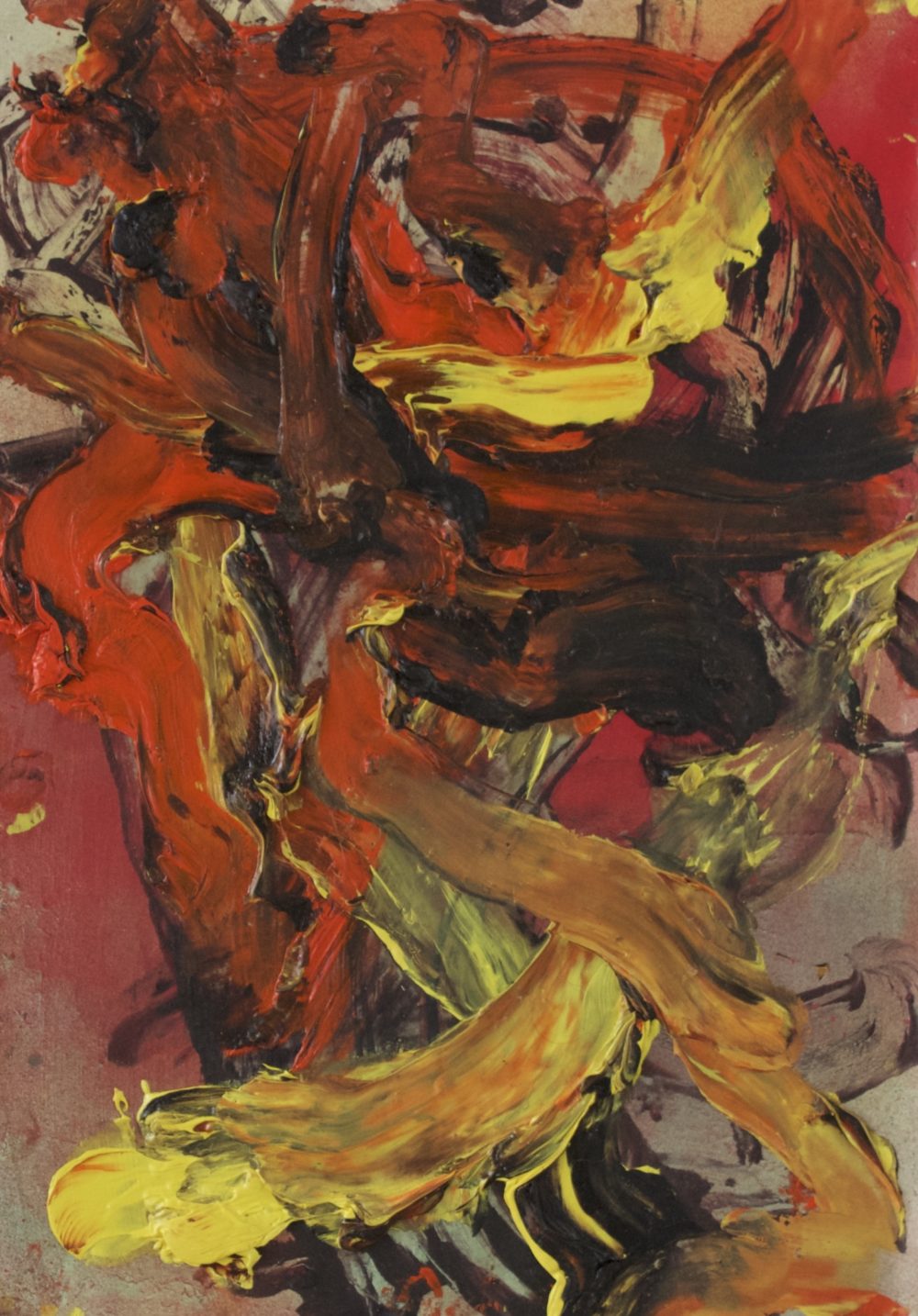
Judy Millar solo exhibition, Sullivan + Strumpf, Sydney, Australia
6 April – 28 April 2018
The gestural and abstracted surfaces of Judy Millar’s art are both intensely physical and highly mediated structures, reflecting the paradox we face of inhabiting both corporeal and cognitive realms.
Millar, a distinguished and internationally acclaimed artist, employs the processes of erasure – wiping and scraping paint off the surface of the work – to create visceral canvases that invoke a sense of the body.
“Without our body we don’t exist, this to me is our experience of the world and this is what paintings can directly address.” – Judy Millar
Millar’s painterly practice also incorporates various printing techniques and digital reproduction, which allow her to push the possibilities of scale by enlarging and exaggerating the painted surface. Through exaggerations of scale, her expressive paintings saturate the viewer and become commanding expressions of embodiment.
13 April – 4 May 2018
Much of Judy Millar’s work is rooted in a childhood hunch. The young Millar intuited an elusive ‘something’ concealed behind the facade of the material world – a somewhat precocious permeation of the regular monster in the closet complex, with a universe-sized closet and metaphysics lurking in lieu of a monster. Most kids get over this sort of thing, but the distinct sense of something beyond our senses mystifies and intrigues Millar to this day.
In tandem with this playful metaphysical paranoia, Millar has maintained a longstanding commitment to the process of painting. Her oeuvre looks less like a collection of thoughts and paintings than a montage of thinking and painting in action.
Within her practice, constant artistic experimentation and mystic inquisitiveness engage and invigorate each other, together forming the engine of her creative evolution.
Perpetually refining her approach to art making in open defiance of inertia, Millar’s lifetime of innovations and insights has lifted her practice beyond New Zealand’s borders and into the international sphere.
As one might expect from an artist investigating the ambiguous nature of experience, Millar eschews direct symbolism in favour of allusion and impression. Her paintings, unimpeded by figuration and singular notions of meaning, deploy a kind of psychedelic abstract-expressionism in service of philosophical and aesthetic play. Blank canvases are transformed by the application and erasure of paint into writhing gestural labyrinths of form, torsion and colour.
One is left with the singular impression that Piranesi has returned from the dead, imbibed illegal substances, and tried his hand at contemporary abstraction.
Digitised brush strokes loop impossibly, penetrating amorphous clouds of luminous colour; here space is treated like paper in the service of origami: flipped and folded, turned inside-out, played with. Our tacit acceptance of the solidity and reality of things is upended and the universe is delivered from our comprehension into mystery. It’s quite good fun. Her work, in a delicious contradiction, is ludic to the point of seriousness – navigating portentous philosophical and aesthetic territory in a bewitching state of frolic. One can’t help but detect the notes of her joy in these meditations on painterly process and metaphysics – a joy so often in absentia in the discourse on such topics.
These elements are conspicuous in a practice that operates in an increasingly diverse array of mediums. Whether she’s charming children with a pulley-operated, large-scale fold-up-book (replete with projected visuals), crashing immense waves of canvas against the rigid ornamentation of baroque church architecture or erecting monumental sculpture that tumbles from the heavens, Millar invokes the invisible subtext underlying the appearance of reality.
Oscillating between her off the grid residence in NZ and her home in the Metropolis of Berlin, she continues her investigations of appearance and reality, poking with her paintbrush, year after year, at the beguiling veil.
Essay by Tracey Clement.
Painting is indexical; the marks on the canvas bear a direct relationship to the gestures of the artist. This is more overt in Pollock’s flung arcs of paint than in the minute daubings of a photorealist, but all paintings are a record of a body moving through space. The paintings in New Zealander Judy Millar’s solo show, My Body Pressed at Sullivan + Strumpf, have a particularly visceral quality.
- Judy Millar from My body Pressed, Sullivan + Strumpf solo show. 2018
- Judy Millar from My body Pressed, Sullivan + Strumpf solo show. 2018
- Judy Millar from My body Pressed, Sullivan + Strumpf solo show. 2018
- Judy Millar from My body Pressed, Sullivan + Strumpf solo show. 2018
- Judy Millar from My body Pressed, Sullivan + Strumpf solo show. 2018
Resembling tangled twists of muscle and tendons, Millar’s dynamic swathes of black seem to move at speed. “Like dance, painting is a direct record of the energy and feeling of a lived-in body,” says Millar, “and my work accentuates this.” Indeed, looking at her paintings is like witnessing the ghostly trace of the artist’s frenetic performance.
In this way, Millar’s abstract canvases are a kind of self-portraiture, but her work sidesteps objectification of the female body, a perennial trope in the Western canon. “Since the movements and actions of my body are stamped all over the canvas my work can be seen to be a picturing of the female body,” she explains. “But of course I’m not working with the body as an object. Rather I take the body as a process, something that can’t be contained. I want the work to be sexy in a fluid way.”
Millar’s title, My Body Pressed, expresses her concern that we are becoming disconnected from our bodies. “The increasingly mediated world we inhabit seems to be pulling our minds and bodies further apart all the time,” she says.
“I worry that our bodily world is disappearing, our bodily intelligence ignored. The title is a rallying cry to bodily communication: to the wonder of touch and sinew.”
Full article here.
The Sinew of Space
It’s frustrating to her, Judy Millar tells me from the West Coast of Auckland as we discuss her exhibition in Zurich, Swallowed in Space, that people are so rarely asking ‘what does painting do to us?’. An affective painting, after all, is something we want to go and see, and revisit, and make part of our wider experience. I wholeheartedly agree with her, especially after having just travelled to see her work (from my current home in Luxembourg) and encountering the way it not only activates space but also allows the kind of ‘space creation’ current in philosophy, cultural geography and advanced architectural research.
Engrossed in the exhibition’s spatial effect, I begin to realise that I am naturally embodying the paintings’ own quest for, and questioning of, modes of movement. Each painting is an intense material object based on movement, while it is also a container that circulates and throws me more broadly into an exploration of the space that emanates from it. ‘Space’ here, is a body-dwelt ‘imaginal’ field. It is the field projected from the body into a ‘spacious view’ of the ‘increasing inclusiveness’ of its expanding boundaries, as philosopher Edward Casey writes of place that has become more spacious in Western thought. In this kind of space, Casey writes, ‘expanding envelopments’ are all linked by the organic body and its history in the ‘fuller compass’ of what is happening, and at stake, in and from a particular place.
Essential to my experience, is the fact that each painting’s sinuous forms continue in striated bands that curve, twist, turn and loop seemingly without end. As I follow them, they always release their coiled directions onwards, even if only through a series of drips, a finger drag or the suggestion of an aspirating colour. They are not brushstrokes, but rather a skilfully indeterminate ‘caricature,’ or parody, of such a singular gesture. Their banding is almost collographic in nature: a result of the artist’s characteristic mark making that accumulates the positive and negative impressions of paint in the push and drag of objects across the painting’s surface. ‘I was trying to think of something like a very big fingertip,’ the artist tells me as she describes the way in which she slid differently-sized bags filled with sand through the paint. They allowed complex forms of movement, she explains, ‘and they have this particular feeling.’ For me, their form is fibrous, elemental and constant, like bands of tendon, muscle fibres, the phloem tissue of bark, and the cellulose cordage of plants. They seem to hold painting and movement together. – Excerpt from the article written by Jodie Dalgleish.
View original publication.
January 25th – February 17th 2018
Photos courtesy of Robert Heald Gallery.
26 October – December 2017
Blood red, jade green, and a bruising purple resonate against yellow and incandescent orange in Judy Millar’s new paintings.
The colour palate is double-edged: reminding us of the moments when nature thrills us with sunsets, sunrises and deep blue lagoons but also recalling the colours of comic books and their depictions of outer-space adventure and future doom.
Millar, a fan of popular science, describes the activity of painting as a form of space travel. When painting Millar experiences space and time merging. As the title of the show suggests, during this process she feels “swallowed in space”.
In this new group of works form becomes the graph of activity. The appearance of “things” emerges from the web of painted lines and fields of colour. Things hard to name but fleetingly apparent establish a semi-believable pictorial space. These strangely spatial paintings exude an otherworldly luminosity as if emitting light from a distant time and place. As Millar applies then removes layers of paint from the surface of the works she seems to release energy as if an image has been held in matter and is now freed into visibility.
Full exhibition history here.
July 2017 – July 2019.
In the South Atrium of the Auckland Art Gallery resides my latest major site-specific commission, Rock Drop 2017. Acquired by Auckland Art Gallery Toi o Tāmaki with the support of Auckland Sculpture Trust, Auckland Contemporary Arts Trust and Auckland Art Gallery Foundation’s 2016 annual appeal.
“This work plays with the complexity of the vibrant junction between the Victorian, neo-Classical and 21st century architecture of the building, Millar’s towering painterly installation responds to the dynamics of the space and appears to change and morph from different perspectives, provoking new and exciting experiences for Gallery visitors.” – Curator and Gallery Director, Rhana Devenport. 2017
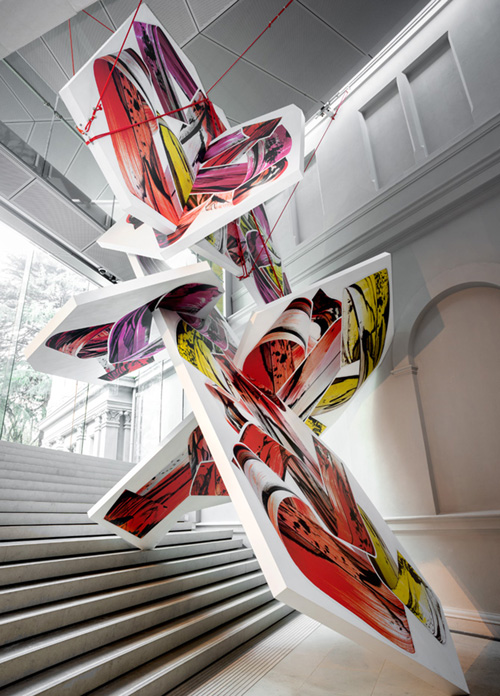
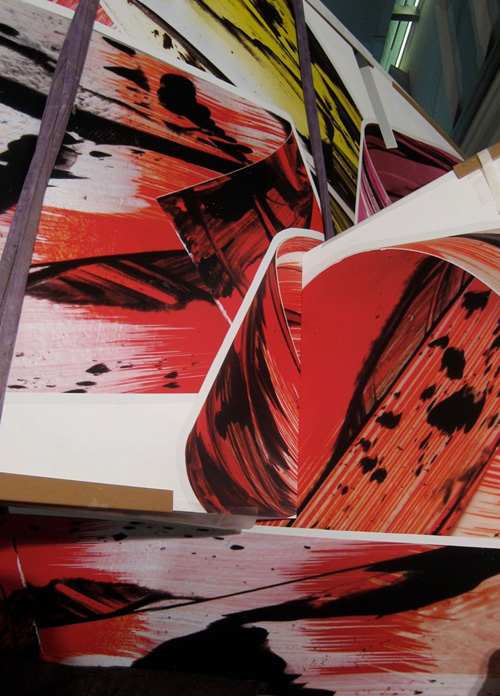
30th August – 24th September 2016

11 June – 23 July 2016
More information about Advancing All Electric can be read in A conversation with Judy Millar, an essay written by Kate Brettkelly-Chalmers for Ocula.
20 April – 7 May 2016
30th October – 15th November 2015
Call Me Snake, a temporary sculpture commissioned as part of Christchurch’s Scape Public Art initiative, SCAPE 8.
Made from steel, plywood and digital print.
Millar is best known for her large-scale digitally printed and painted canvases, which loop and undulate through architectural spaces, exploring ideas of scale, and the compression of time and space. Her work for SCAPE 8 New Intimacies, Call me Snake, pushes these ideas beyond the enclosed architectural spaces she has previously worked with, into the Central Christchurch landscape.
Full article here.
29 May – 26 June 2015
Excerpt from i-D Interview.
In the past decade, acclaimed New Zealand artist Judy Millar‘s varied work has filled a German gallery with Technicolor tidal waves and unspooled wild brushstrokes across the walls of a Renaissance church for the 53rd Venice Biennale. Always a fan of an enveloping spectacle, her latest show Reverse Cinema at Sydney’s Sullivan + Strumpf draws on painting, sculpture, and light projections to create an installation that’s both soulful and cerebral. With the show involving her most audacious work yet, i-D chatted with the artist about her allergy to categories, falling in love as an intellectual experiment, and why she dreads public art.
Read the full article by Neha Kale for i-D. Or download here.
30 April – 3 May 2015
Featuring artists: Elena Bajo, Stella Geppert, Judy Millar, Yorgos Sapountzis, Peter Welz and Michaela Zimmer.
3rd March – 28th March 2015
In this exhibition, Millar exhibits a large group of paintings generated in her Berlin studio. Taking cues from the colours found in post-apocalyptic comics these works glow with an otherworldly light, mysterious and unsettlingly beautiful. Forms appear to emerge and disintegrate in an unstable world of things half-seen and impossible to recognise.
13th February – 1st April 2015
Judy Millar: The Model World
In the theatre world, models are miniature sets used to test the placement of images and objects in a specific space. Like a life-size model world, Judy Millar’s recent work combines a projected image, moving components, and painted and blank surfaces, which collectively could resemble an artist’s studio or an engineering workshop – both sites for production and experimentation or creativity through play. Visitors are encouraged to participate and occupy Millar’s constructed world by transforming flat-folded works into three-dimensional pop-ups and casting exaggerated shadows while moving through the gallery, making explicit the subjective and ambiguous relationships that influence our experience of paintings; between painting and space, image and form, the real world and its mediated imprint on a surface.
The Model World also extends on our new publication, Swell, a pop up book for children and the result of a collaboration between Judy Millar, writer Trish Gribben and paper engineer Phillip Fickling. Millar’s paintings were turned into twisting, swelling and heaving pop-ups that folded neatly between the pages. Here, paintings shift scale again to take on a larger-than-life presence as a further exploration of the degrees of separation in the painting process that playfully but persistently rejects the notion of a painting as a discrete, mimetic object that represents the world but is not subject to its forces.
A solo show of Judy Millar at Galerie Mark Mueller, Zurich, Switzerland.
11 October – 15 November 2014
Press Release by Pascal Marchev.
Judy Millar: Paintings
Nachdem Judy Millar in den vergangenen Jahren ihren Gestus auf unterschiedliche Weise zu analysieren und hinterfragen versuchte, indem sie eigene Bilder beispielsweise digital bis zur Verpixelung vergrösserte und mit Siebdruck in die Leinwand-Arbeiten miteinbezog, kehrt sie in ihrer 5. Einzelausstellung in der Galerie Mark Müller, wie der Ausstellungstitel bereits erahnen lässt, zurück zur Malerei in ihrer reinen Form.
Ihre Bewegungen, mit denen sie unter direktem Einsatz ihres Körpers die auf dem Boden liegenden Leinwände mit Farbe bedeckt und verwischt, werden durch eine symbiotische Verbindung von Körper und Geist geleitet, welche sich gegenseitig beeinflussen. Intuitiv setzt sie Bilder aus ihrem Innern in eine Malbewegung um. So sind ihre Arbeiten auch nur auf den ersten Blick fern jeglicher Gegenstandslosigkeit. Im Gegenteil, sie versucht bewusst die Wahrnehmung des Betrachters herauszufordern und geht dabei einer der grossen Fragen des Menschen nach: Ist die Welt, die ich erlebe dieselbe, die jemand anders erlebt? So spielen auch die Titel der mittelformatigen Leinwandarbeiten „Flicker Rate“ auf die Theorie an, dass sich die Welt zu jedem Moment in verschiedenen Zuständen befindet, ähnlich wie Schrödingers Katze zugleich lebendig wie auch tot ist. Wir als Betrachter nehmen durch ein ständiges Flimmern jedoch nur eine einzelne Realität wahr.
Mit unserer Wahrnehmung spielt auch die formale Zusammenstellung der Arbeiten, welche alle in diesem Jahr entstanden. In farblich zusammengehörigen Gruppen gehängt, innerhalb derer jedoch Grösse und Medium variiert, werden die Grenzen zwischen den einzelnen Arbeiten aufgelöst. Es scheint, als betrachte man dasselbe Bild in unterschiedlichen Zoom-Stufen. Man wird eingesaugt und wieder abgestossen von den fraktal-artigen Formen, die so typisch sind für Millars Technik. Das was sie also mit dem digitalen Aufblasen ihrer Malerei vor zwei Jahren untersuchte, zeigt sich auf eine Art in den jetzigen Arbeiten erneut. Im Vergleich zu der zweidimensional wirkenden Siebdruck-Schicht, lassen uns jedoch die aktuellen Gemälde ein ganzes Universum entdecken, in welchem man als Betrachter in immer tiefer liegende Schichten eintaucht. Ein Universum, eingefroren in einem bestimmten Moment, erzeugt dabei einen spannungsgeladenen Widerspruch zu dem so dynamischen und zeitlich andauernden Malprozess, der jede Arbeit in der Entstehung voneinander trennt und eine direkte Verbindung ausschliesst.
Die Hängung innerhalb der beiden Räume der Galerie Mark Müller führt dieses „in and out“ – dieses Eintauchen von einer Arbeit in die nächste – noch weiter indem die erstaunlicherweise kleinste Leinwandarbeit wie ein Portal die zwei Räume verbindet. Sie lässt den Betrachter mühelos von einem Raum in den nächsten springen. Ein Wurmloch von einem Punkt des Universums zu einem anderen.
Essay download.
Published in December 2014.
Published by Te Uru Contemporary Gallery Waitakere (formerly Lopdell House), Titirangi, Auckland, New Zealand. Swell is an artwork for children that is a pop-up art book.
An enchanting pop-up book full of Judy’s painted twists, twirls, swells and swirls. Possibly the first artwork /art-book in many children’s lives. A paper engineering masterpiece, Swell is a collaboration between writer Trish Gribben, paper engineer Phillip Fickling, and painter Judy Millar.
Gribben and Millar presented the book at the Auckland Writers Festival on May 17, 2015. The book was officially launched on the 5th December 2014.
Press relating to the publication: Christchurch Art Gallery | Stuff.co.nz | YouTube | Gow Langsford
Available from: Good Reads | Wheelers | Te Uru Waitakere | Scape Public Art
11 February – 11 May 2014
Cinema & Painting examines the intersection of these two screen-based arts against the backdrop of a culture characterized by the increasing plasticity of pictorial surfaces and flexibility of spaces of viewing.
Space Work 7 – wood, paint and digital print
Public Program is available for download here.
Judy Millar’s solo exhibition at the Institute of Modern Art (IMA) Brisbane.
8th June – 27th July 2013.
Every time I make a painting I’m dragging the whole history of painting with me. — Judy Millar
Judy Millar: Be Do Be Do Be Do
Auckland painter Judy Millar has been making ever bigger paintings. A few years back, she surprised and confounded her audience by enlarging her painterly gestures using a billboard printer—it seemed heretical. Was this painting proper or something else? In Be Do Be Do Be Do, she goes the other way, hand-painting monstrously enlarged half-tone dots on ribbons of bendy-ply, which are contorted into complex curves, creating a play between the Arp-like biomorphism of the painted imagery and the Serra-like architecture of the scrolling wood. One curly painting, sitting on its edge, barricades a gallery; one, mounted to the wall, is all fleshly folds and love handles; another hangs from the ceiling from a harness, unfurling, flaccid, across the floor, revealing its pink underside. Rosemary Hawker reads Millar’s project through Susan Stewart’s interest in the play between the miniature (the world within the world) and the gigantic (the world without world).
Rosemary Hawker publication by IMA Brisbane, Australia. Available here.
5th February – 1st March 2014.
The second solo exhibition of Judys work in the gallery. The title drawing attention to the role of colour in Millar’s work; hot, strong, joyful, fiery, wild colour.
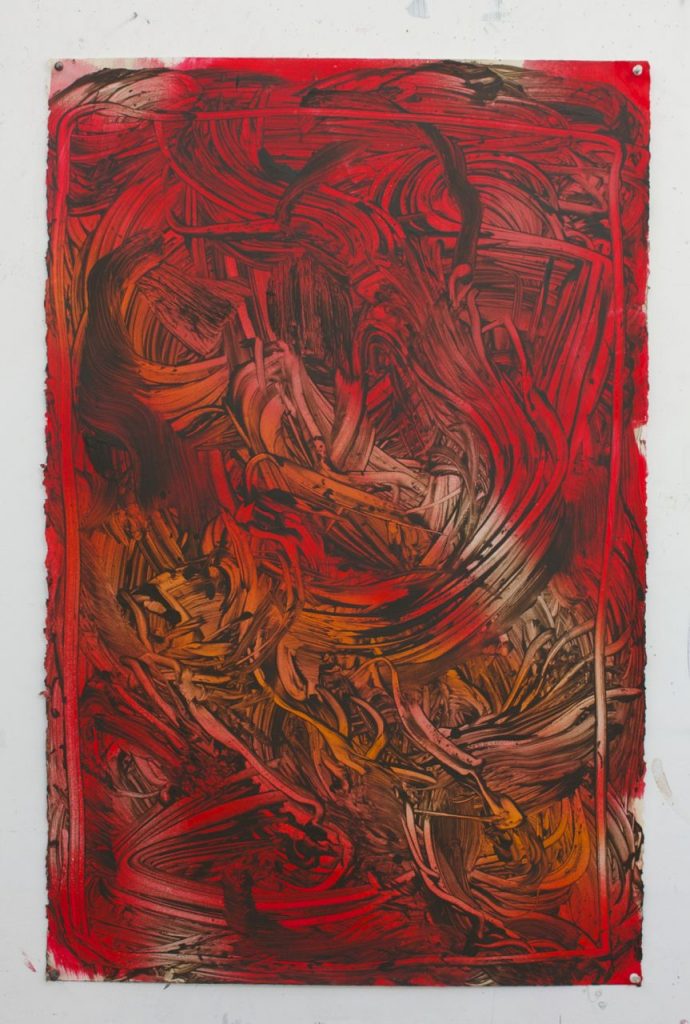
Much has been written about the Millar gesture – its bold, expansive, assured form swirling across her chosen surface whether canvas, paper or vinyl or, as we have seen most notably in her Venice Biennale exhibitions in 2009 and 2011, taking painting off the wall and into sculptural form out into space and the world. However here in this exhibition of three large and one smaller painting, paint remains contained and the place of colour in her work is foregrounded.
It is this colour that we respond to emotionally or sensually in the first instance before the intellect steps up and engages, drawing us in to Millar’s underlying project – a sustained investigation of the issues and challenges of painting and its place today’s visual economy today.
Rather than the issues of representation and the tension between two and three-dimensional space that have more often been discussed in relation to Millar’s work, what first comes to mind here are ideas about how painting engages with the emotions.
Again history provides the springboard with Kandinsky and his colour theories and Rothko and the colour field painters of the mid 20th century providing the starting point to let us think both about how art makes us feel personally and how it operates in a way that is quite different to its antecedents.
Formal purity is not a concern of this 21st century abstraction, what is more relevant is a kind of subversive questioning of possibility and progress.
8th June – 27th July 2013.
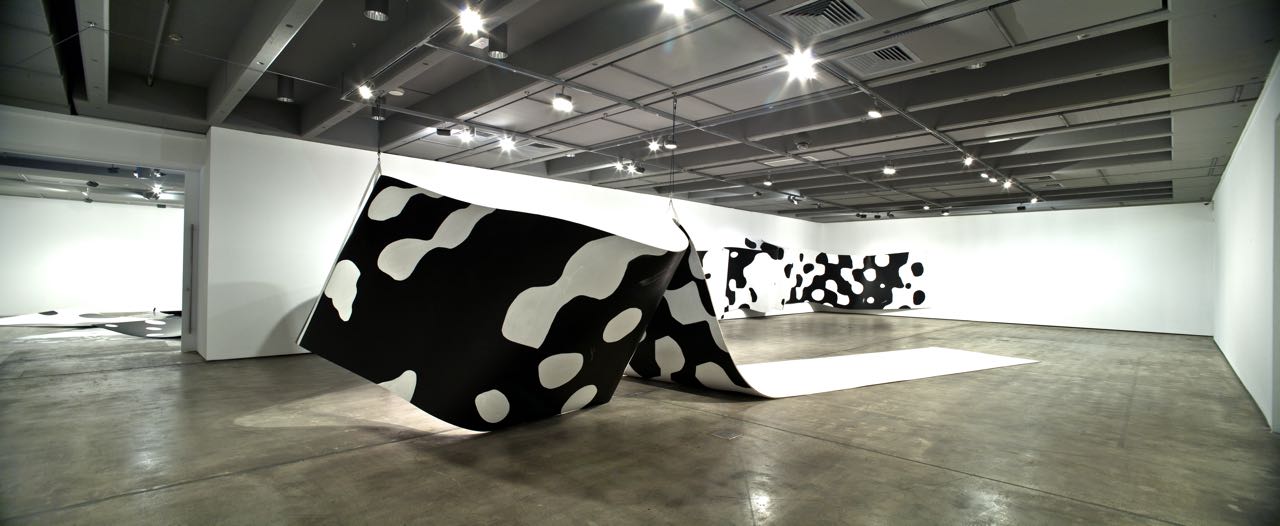
Post-expressionist painter Judy Millar is a paradox. She seems to do everything she can to distance herself from the old idea of authentic, expressive painting. She has made candy-coloured, heroically-scaled, parodic abstract-expressionist paintings. She has blown-up her painterly gestures using a billboard printer. She has attached these printed ‘paintings’ to giant sculptural supports (so it’s hard to tell if her painterly gestures are in competition or cahoots with their support). Recently asked if she was trying to denature or dehumanise the brushstroke, Millar explained, ‘I’m not trying to dehumanise it. If anything I’m trying to rehumanise it. I’m trying to give it more authority. Despite the absurd scale, you still relate to the work through your body.’ So, regardless of her apparent efforts to put expressive painting in scare quotes, Millar’s works continue to court affect. They attest to the incredible resilience and efficacy of painting—a medium that has survived (but been transformed by) its many ‘deaths’.
For Be Do Be Do Be Do, Millar offers further turn of the screw. She has created three massive, ribbon-like paintings of enlarged, handpainted half-tone dots. Half-tone dots may be a standard trope of pop art (trademark of Andy Warhol, Roy Lichtenstein, and Sigmar Polke), but here they are scrambled with the expansive scale of AbEx murals. Millar made the paintings on bendy ply, which she then contorted into complex curves, creating a play between the painted forms and the sculptural ones, between the Arp-like biomorphism of the painting and the Serra-like architecture of the scrolling wood. One painting, sitting on its edge, barricades a gallery; one, mounted to the wall, is all fleshly folds and love handles; another hangs from the ceiling from a harness, unfurling, flaccid, across the floor, revealing its pink underside. A further installation juxtaposes handpainted dots with mechanically reproduced ones. It’s painting as physical comedy—slapstick.
11th May – 8th June, 2013
Excerpt from Art Collector
I Give You The End of A Golden Thread will be Judy Millar’s second solo exhibition in Australia. In it, Millar succeeds in creating an experience of painting through which both hers and the viewer’s world is directly addressed via a perpetual motion of ideas which inform the work. In both this body of work and in her upcoming solo at the Institute of Modern Art, Brisbane in June, Millar has moved away from the academic and conceptual to create a highly personal exhibition.
February 2013.
Comic Drop an exhibition of new works by gallery artist Judy Millar. Millar is one of New Zealand’s most exciting contemporary painters who shares her time between a remote property in West Auckland and inner city Berlin – where her career continues to gain momentum.
Comic Drop brings together a series of new works that combine exaggerated enlargements of handmade gestures with vivid colour. In these works Millar continues to takes on the history of expressive painting and turn it inside out.
Recent career highlights include two exhibitions at the Venice Biennale representing New Zealand with her solo exhibition Giraffe-Bottle-Gun 2009; and in Time, Space, Existence a curated exhibition at Pallazo Bembo in 2011. Her work is about to be featured in a large exhibition of star international art in the Czech Republic and an upcoming solo exhibition at IMA Brisbane, Australia.
Excerpt from Frankfurter Kunstverein
The term “contact” refers to the network of relationships between the two dominant ethnicities in bi-cultural Aotearoa/New Zealand: the indigenous population of Māori and the white settlers, “Pakeha”. Video works by Lisa Reihana, for example, deal with themes of cultural oppression, the search for cultural identity, and the struggle for self-determination.
New technologies and old myths are intertwined in works by Rachael Rakena, while Francis Upritchard creates new, hybrid forms based on historical objects. Issues related to the complexity of multicultural society in the scope of a powerful influx of immigrants from the Polynesian islands, as well as the fate of a life in exile, are reflected in the photographs of Edith Amituanai. “Contact” not only presented works that artistically address socio-cultural conflicts in today’s Aotearoa/New Zealand, but also ones of a more poetic nature, like works by Dane Mitchell or site-specific installations by John Ward-Knox.
“Contact” outlines a complex portrait of artistic production of the last forty years in Aoteaora/New Zealand. Here works are not used to illustrate a single thematic point, rather the aim is to create a multifaceted perspective of a highly active and heterogeneous artistic scene within the context of a contemporary dialogue.
The title of the exhibition is expanded conceptually to include the artistic methods and processes of painters like Judy Miller, who, alongside Francis Upritchard, represented New Zealand at the Venice Biennale in 2009, or Simon Ingram, who employs a programmatic approach devoid of subjective intervention in his “Automata Paintings”.
Curators: Leonhard Emmerling, Aaron Kreisler

Read full article.
1st May – 25th May 2012
Excerpt from Spectrum, May 5-6th 2012.
Commanding brushstrokes of thin paint are wiped, erased and manipulated across the picture plane to create the distinctive interwoven complexity of line in Judy Millar’s work. The artist then blows up the image digitally, silkscreen prints it and paints over with metallic, shimmering colour.
This is the first show in Australia in a decade for the New Zealand artist, who represented her country at the 2009 Venice Biennale.
April 14th – June 14th, 2012.
In The Rainbow Loop, Judy Millar shows an individual work that describes a lurching process of a single painterly image, its digital reproduction, its expansion and elevation in space.
This gives rise to a work inside and outside and early as the end of one questions it dances and rolls through the exhibition space, it changes our perception and invites us to experience a temporary twisted world.
It questions how we reconcile our physical and mental existence, how we distinguish between illusion and reality, and how we form a connection from the myriad of our fragmentary perceptions.
Original publication.
A revealing aspect of abstract painting like that of Judy Millar is its minimum referential character. Colors, shapes, and movements cannot be decoded using a canon of signs taken from the world of things but function in a primarily selfreferential fashion. Meaning and content are thus conveyed in an abstract system, which Judy Millar seeks to explore in her current works.
The title is taken from computer terminology, and describes a so-called LIFO (last in-first out) method for organizing (abstract) data systems, where the last information that is entered into a system is the first to emerge from it. The instruction “push, pop, stack,” applied to Judy Millar’s painting, can best be observed in her process of creation, which is characterized by multiple acts of application and removal, adding and deleting. Paint is applied to an unmounted canvas lying on the floor, and then once again removed using a scraper, brush, or the artist’s bare hands. This process, repeated several times, leads to the state of reduction that Judy Millar strives for. Each new layer sets itself apart from the previous, allowing no more than a single trace of the painted shapes beneath to shimmer forth. And yet, the accumulation and obliteration of these supposedly nonreferential gestures can achieve the level of great tension and presence that marks the “finished” motif. Judy Millar tries to capture precisely how this moment comes about in her latest works by photographing these small-format paintings, and then after a color correction transferring them through a complex grid-point silkscreen technique to much larger formats. The same motif is thus transformed into various states. In the large formats, it is the blow up of two motifs on differently painted canvases that is able to express Judy Millar’s intention with a certain urgency: the significant moment in the genesis of the work in which painting condenses to a statement is not only explained by repetition, but also illuminated in countless possible applications.
1st May – 4th June 2010.
Written for Monopol Magazine, Germany
Für ihre raumgreifende Installation in La Maddalena benutzte Judy Millar riesige, mit stark vergrößerten Gesten der Künstlerin bedruckte Leinwände, die sich durch den Raum wanden und sich in ihm entfalteten; das Betrachten wurde für den Besucher zu einem kinematografischen Erlebnis, da das vollständige Erfassen der Installation nur durch das Umrunden der Leinwände, also durch Integrieren der Elemente Zeit und Bewegung, möglich war.
Für die aktuelle Ausstellung nimmt sich Judy Millar einer ‘white cube’ Galerie an; einem Raum, der völlig anders ist als eine barocke Kirche, der aber genauso mit malerischer Vergangenheit aufgeladen ist, und der sich genauso stark verwandelt durch ihre gewagte Installation.
Lange Leinwand-Bahnen, bedruckt mit Millars malerischen Zeichen, fließen durch den Raum der Galerie wie kollabierte Plakatwände, sie liegen gestapelt aufeinander, winden und rollen sich über sich selbst. Millars Gesten, auf der Leinwand zehnfach vergrößert, enthüllen einige wichtige, intime Details ihrer Arbeitsweise, aber sie haben auch einen grafischen, Comic-artigen, gar komischen Charakter. Sie werden zu eigenständigen Objekten mit einem Eigenleben, abgetrennt von der Künstlerin, die sie erschaffen hat. Wie Jennifer Gross schreibt: ‘durch das Vergrößern und Reproduzieren der manuellen Geste, wird der tatsächliche Malprozess der Künstlerin herauskristallisiert und übertragen.’ Gross beschreibt die bedruckten Leinwände weiter als ‘großräumige Nachwirkungen der Atelierarbeit.’
Das folgende Zitat von Judy Millar sagt viel über ihre Herangehensweise aus: ‘Als ich gestern mit dem Taxi durch die Stadt fuhr sah ich ein Bild, das sehr gut mit der Arbeit, die ich für die Ausstellung gemacht habe, korrespondiert. Eine Shampoo Werbung auf einem mehrstöckigen Hochhaus zeigte Haare, die in Locken die Fassade herunter und um die Ecke des Gebäudes fielen. Die Locken erhielten Volumen und Kontur durch die Form des Gebäudes und lösten gleichzeitig dessen Umrisse auf. Auf die gleiche Art und Weise transportieren die langen, Bänder-artigen Bahnen in der Ausstellung die übertriebenen malerischen Gesten, heben sie in und durch den Raum, während sie gleichzeitig durch die auf die Oberfläche gedruckten Bilder deformiert werden. Weitere Verzerrungen entstehen dadurch, dass der Betrachter das Bild nie von einer einzigen frontalen Perspektive erfassen kann, sondern sich entlang der Arbeit bewegen und sie in der Bewegung rekonstruieren muss.‘
Es ist diese Interaktion zwischen den malerischen Spuren der Künstlerin selbst – und deren Vergrößerung – und den realen Dingen der Welt – einschließlich der Betrachter – die Millars Arbeit jenseits eines vereinfachenden Diskurses über Malerei und Installationskunst ansiedelt. Stattdessen überschreitet sie die Linie zwischen bildlicher Fiktion, bildlicher Realität und realen Dingen im Raum. Durch diese Praxis beschäftigt sie sich mit einem fundamentalen Thema, das weit über Abstraktion hinweg bis in die Renaissance zurückreicht – namentlich in die Diskussion über die paradoxe Beziehung, die die Malerei mit der Welt hat, die sie einerseits versucht abzubilden und von der sie andererseits ein Teil sein will.
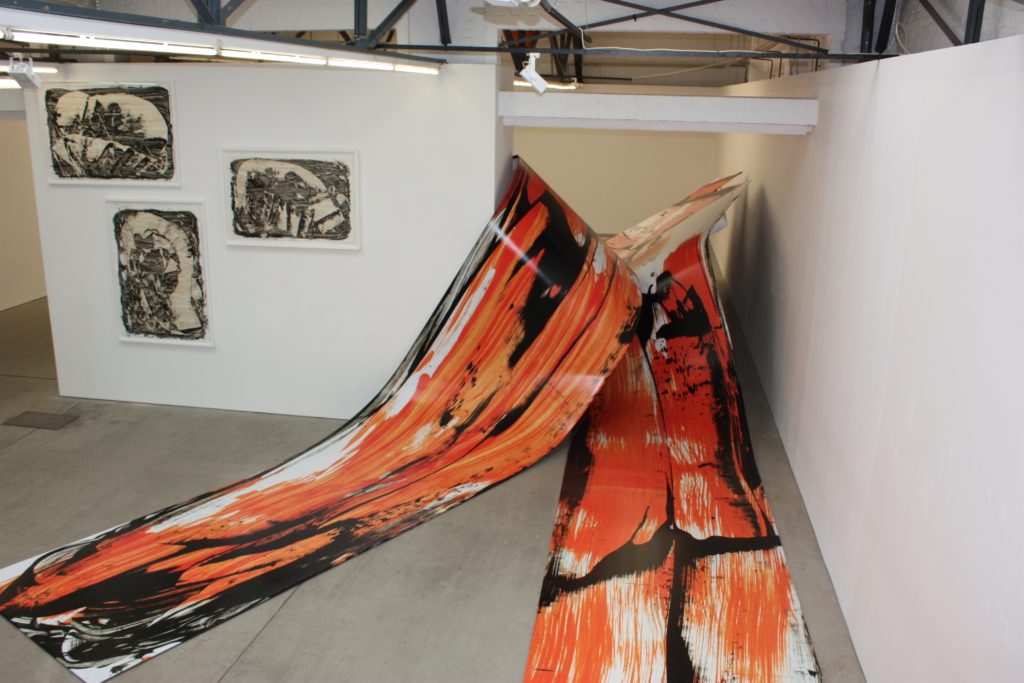
Millars Installation ist deshalb nicht nur ein Objekt, das wir schweigsam betrachten sollen. Fordernd, spielerisch und manchmal ganz und gar konfrontativ, zerrt und schubst sie uns durch den Raum und eröffnet uns Möglichkeiten neuer Entdeckungen und Erfahrungen. Dadurch birgt sie das Versprechen auf ein ‘besseres Leben’ in sich; einen Optimismus im Hinblick auf die Art und Weise, wie wir die Welt um uns herum erfahren, und die wichtige und menschliche Rolle, die die Kunst in dieser Welt spielt.
Judy Millar lebt und arbeitet in Berlin und Auckland. Sie nimmt gerade an einem dreimonatigen Atelierstipendium des ISCP in New York teil. 2009 vertrat sie Neuseeland auf der Venedig Biennale. Folgende Einzelausstellungen fanden in jüngster Zeit statt: Matte Black in der Galerie Mark Müller, Zürich; Butter for the Fish bei Gow Langsford, Auckland und The Secret Life of Paint in der Dunedin Public Art Gallery.
Judy Millar war 1994 Moet & Chandon Stipendiatin in Frankreich, 2002 gewann sie den Wallace Art Award. 2006 erhielt sie das Colin McCahon Atelierstipendium, das in jenem Jahr zum ersten Mal verliehen wurde. Weitere Stipendien erhielt sie von der Dunedin Public Art Gallery sowie dem Goethe Institut, Berlin. Eine umfassend Monographie über ihre Arbeit mit dem Titel You You, Me Me, erschien 2009 im Kerber Verlag.”
(Pressetext: Hamish Morrison Galerie)
Read originalartikel.Große Leinwandbahnen, die mit Millars malerischen Zeichen bedruckt sind, fließen durch die Galerie.
1st May 2010 – 4th June 2010
New Zealand artist Judy Millar, who lives in Auckland and Berlin, is exhibiting at the Hamish Morrison Galerie in the German capital, her first solo show — entitled ‘A Better Life’ — since her major installation in La Maddalena at the 29 Venice Biennale.
Large lengths of canvas printed with Millar’s painterly marks flow through the confines of the gallery like collapsed billboard advertisements, lying piled up and curling over themselves. Millar explains: “Yesterday while travelling through the city by cab I saw an image that corresponds closely to the piece I’ve made for the show. A shampoo advertisement of a many-storied high head had hair falling in curls down a building’s facade and around the building’s corner. The curls gained volume and contour from the building’s form while at the same time deconstructing the building’s outline.”
Millar is currently completing a three-month residency at the ISCP programme in New York. ‘A Better Life’ runs through June 5 2010.
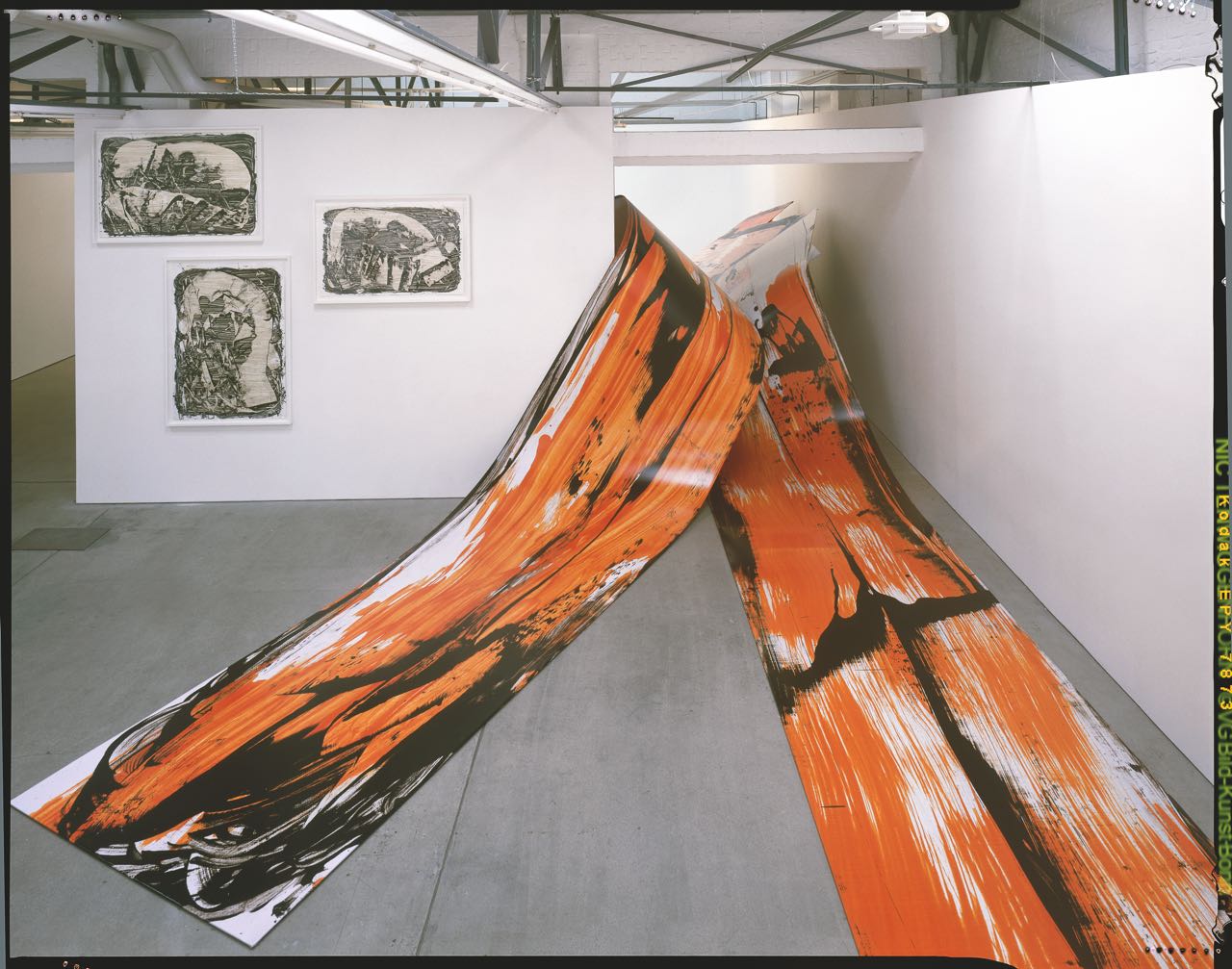
Excerpt from Artsy
Judy Millar’s large-scale gestural paintings defy dimensions and seek to interrupt and invade the spaces they occupy. A signature of her practice is the creation of long, looping paintings that appear to pour out from the wall, forming large coils in the gallery space.
Colliding notions of space and time, Millar’s paintings are, in a sense, four-dimensional, distorting the typical temporal experience of art.
Whether in these tumbling paintings or her more conventional, flat canvases, Millar’s brushwork is gestural, her palette consisting of stark black and vibrant colours. She views the paint itself as an occupying a plane of its own: paintings are illusions and ideas, the canvas merely a physical support.
